18th Meeting of the Conference of the Parties of the Convention on International Trade in Endangered Species of Wild Fauna and Flora (CITES CoP18)
17-28 August 2019 | Geneva, Switzerland
Summary Highlights: 17 - 28 August 2019
Less than four months after the Intergovernmental Science-Policy Platform on Biodiversity and Ecosystem Services released its landmark Global Assessment Report on Biodiversity and Ecosystem Services warning that nature is declining globally at rates unprecedented in human history—and the rate of species extinctions is accelerating, with grave impacts on people around the world—the eighteenth meeting of the Conference of the Parties (CoP18) to the Convention on International Trade in Endangered Species of Wild Fauna and Flora (CITES) convened in Geneva, Switzerland. CoP18 responded to this crisis, in part, by revising the trade rules for dozens of wildlife species that are threatened by unstainable trade linked to overharvesting, overfishing, or overhunting.
Highlights for Wednesday, 28 August 2019
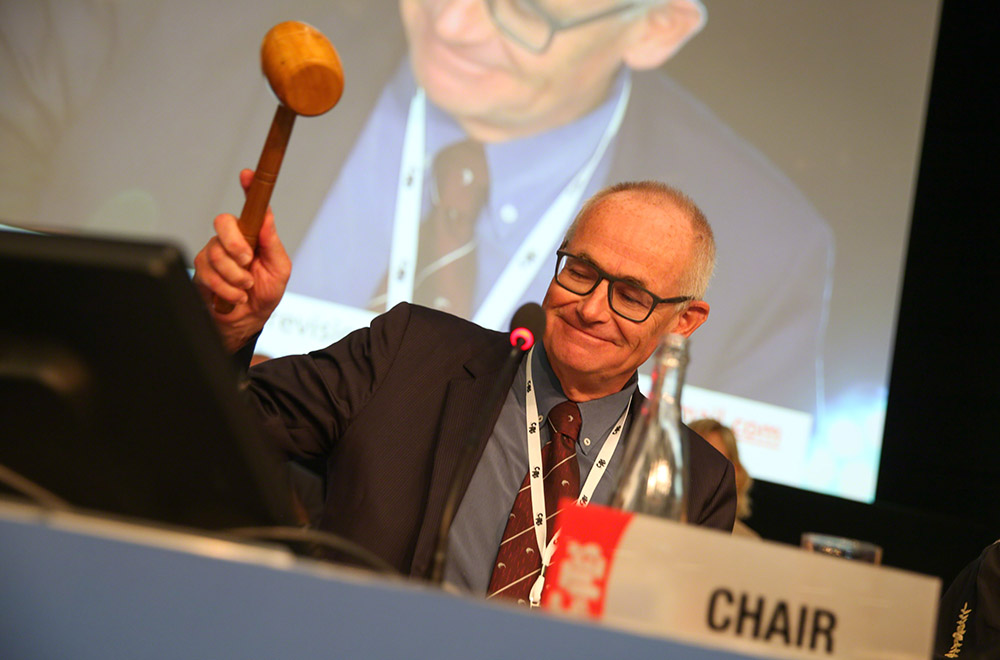
CITES CoP18 delegates reconvened in plenary on Wednesday 28 August 2019 to adopt remaining proposals, including the listing of Mako sharks, wedgefishes, guitarfishes and sea cucumbers (teatfish) on Appendix II, all of which were formally adopted without reopening of debate.
In their closing remarks, several observers praised the CoP for its “collegial spirit” and for adopting decisions that will strengthen global wildlife conservation, while others expressed concern that diverging views on conservation and sustainable use had been inadequately reconciled, highlighting the deepening divisions within the African region.
Many parties commended CoP18 for its work, and looked forward to playing their respective roles in implementing the new listings. Japan, Tanzania, and several NGOs stressed that listings should be science-based. Tanzania, on behalf of Southern African Development Community (SADC) countries, argued that the Convention is not aligned with other international agreements and is working in contradiction to principles of national sovereignty, inclusive and equitable development, and the rights of local communities living with wildlife to use those resources.
Japan noted that appropriate trade in wildlife can contribute to conservation, and urged parties to undertake wildlife conservation and community development in an integrated way to support custodians in range states. He called for CITES to take a holistic approach and cooperate with other biodiversity conventions.
China expressed its support for the Convention and its increased prioritization of conservation objectives, noting that his country is “on the road towards eco-civilization.” The EU and US also expressed full support, and the US recalled that CITES was created to ensure that trade does not negatively impact the survival of wild species. Mauritania called for “better listings, not more listings.”
Secretary-General Higuero closed by highlighting accomplishments from CoP18, noting that “this 45-year-old Convention is now on a stronger path” with the collaborative work on the CITES Strategic Vision, to ensure CITES is a leader in transformative change into the future and that it aligns with the 2030 Agenda on sustainable development. She noted the collaborative discussion from over 100 parties about how CITES might better engage indigenous peoples and local communities, and ensure they benefit from trade and conservation, as CITES will struggle to succeed without them. She drew attention to CITES’ increased capacity to fight illegal trade in wildlife, especially as a lot of this trade moves online, noting, as highlights, the strengthened enforcement through International Consortium for Combating Wildlife Crime (ICCWC), and the newly created Big Cats task force.
Higuero said that Appendix II listings show that parties increasingly rely on the Convention as “a vital safety net”, most notably for marine and timber species. She reminded the CoP that reptiles, birds, and smaller animals are vital for the survival of life on earth and need just as much attention from the Convention as megafauna.
In closing, Higuero noted that CITES provides a space for common goals towards sustainable development and the longtime survival of the world’s endangered species.
Chair Jemmi hailed the achievements of parties, noting that in most cases the decisions were agreed by consensus. He thanked all participants for their passion and commitment and closed the Conference at 11:30 am.
Please return to this site on Saturday, 31 August for the ENB summary and analysis report.
IISD Reporting Services, through its ENB Meeting Coverage, provided daily web coverage and a summary and analysis report from CITES CoP18.
Photos by IISD/ENB | Kiara Worth
For photo reprint permissions, please follow instructions at our Attribution Regulations for Meeting Photo Usage Page.
Closing Plenary
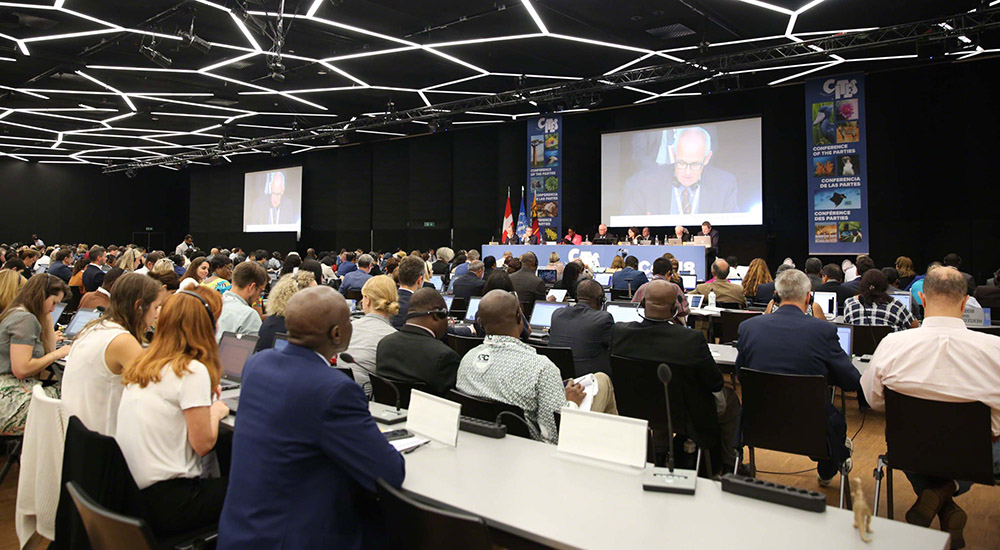
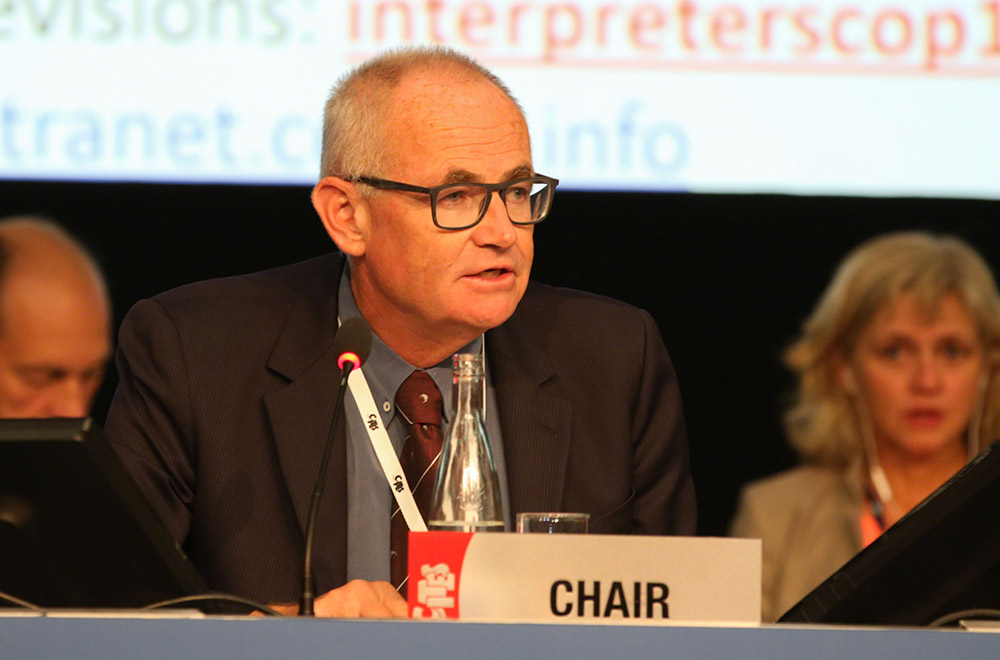
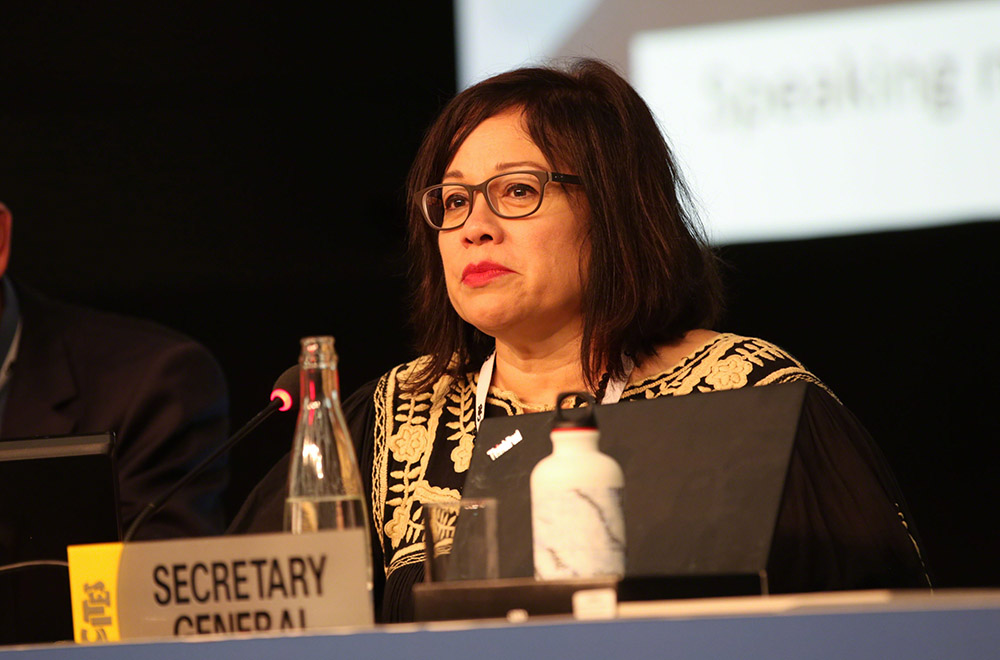
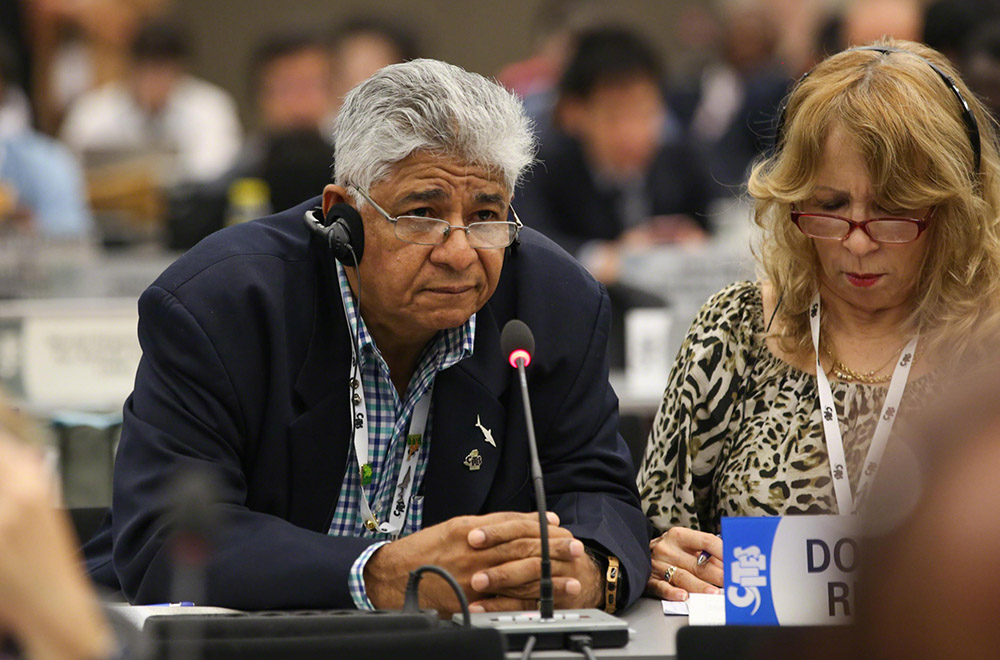
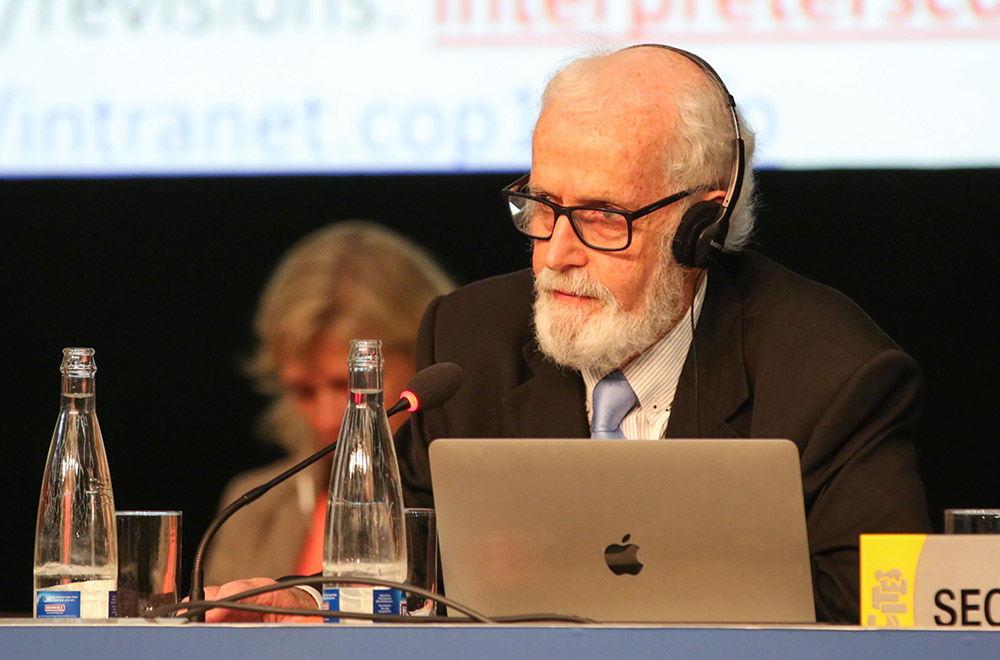
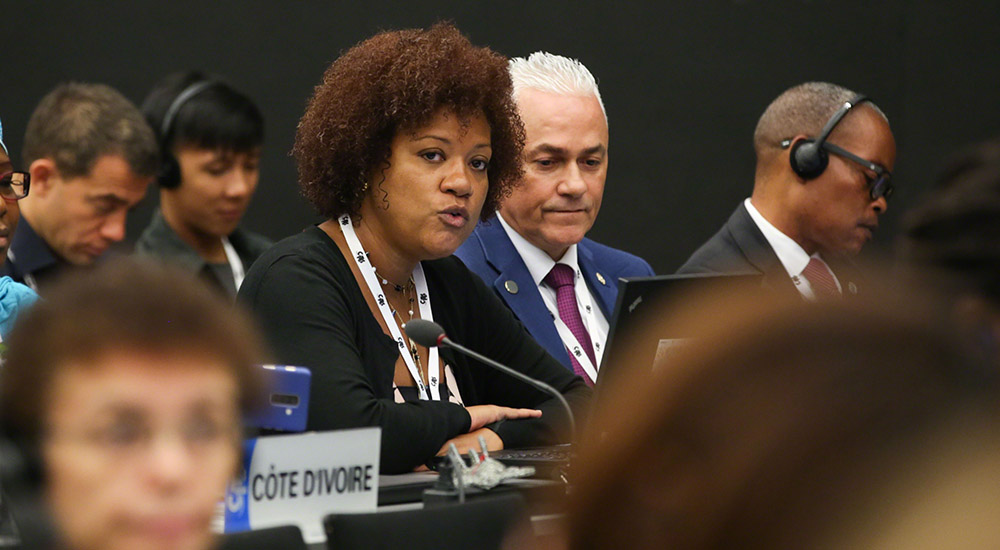
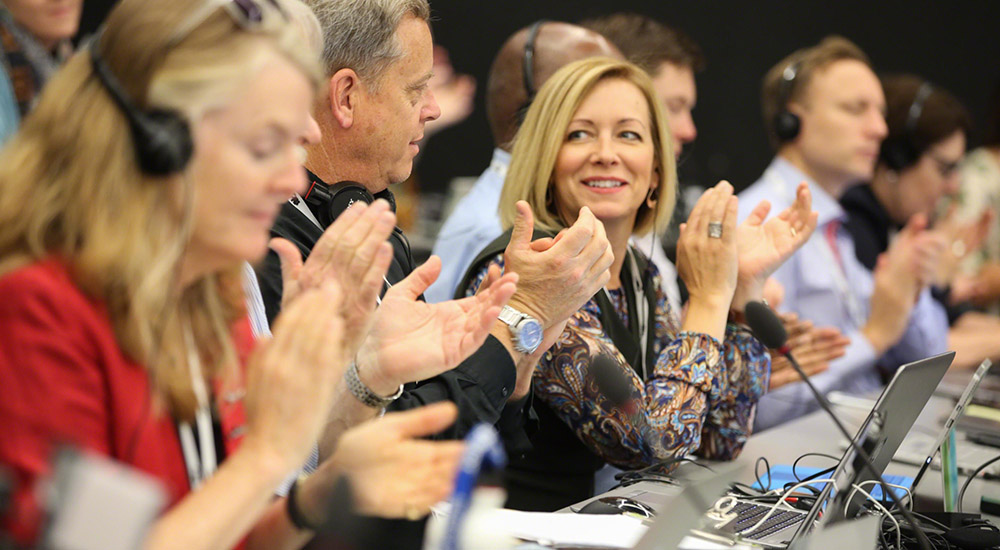
Highlights for Tuesday, 27 August 2019
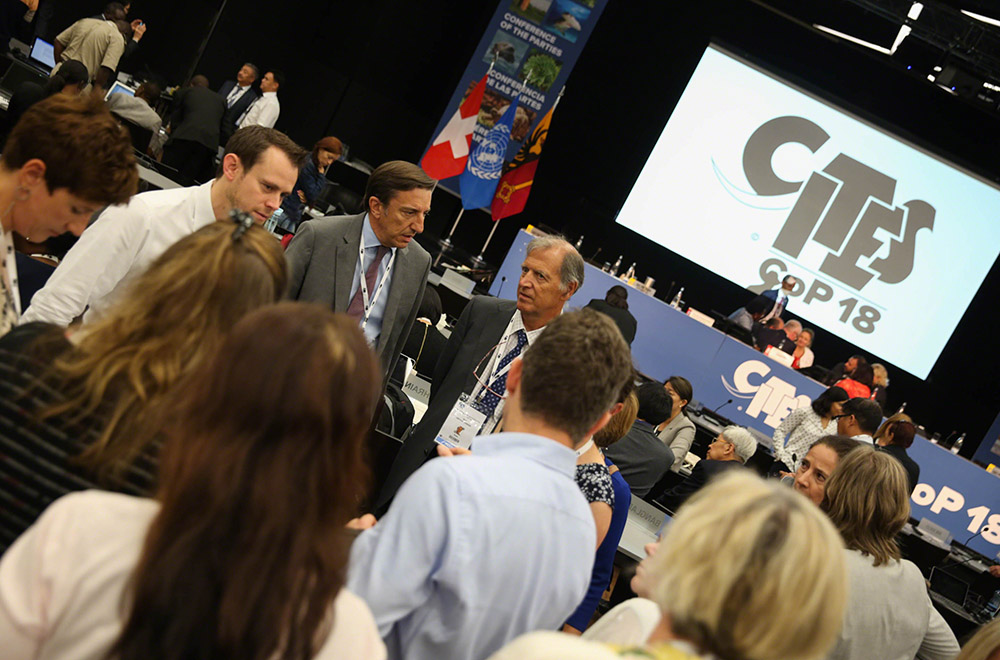
The day began with many firsts as the plenary swiftly completed its morning agenda and entered new territory in the interpretation of Article XVIII on the Resolution of Disputes.
The EU, supported by the Democratic Republic of the Congo, and opposed by Costa Rica, requested to reopen discussion on the Committee’s decision to accept the draft amendments to Resolution Conf. 11.20 (Rev. CoP17) concerning trade in live wild-caught elephants.
While supporting the intent of the original proponents, the EU noted areas of concern and suggested several amendments to ensure: provisions for ex situ to ex situ movement of older animals originally from the wild, scrutiny by relevant CITES scientific and management authorities, and under exceptional circumstances or emergencies, transfer of wild animals to ex situ destinations.
Zimbabwe, supported by eSwatini, Zambia, Namibia, and other southern African countries, invoked Article XVIII of the Convention, declaring a dispute with the proponents of the originally proposed amendments and the EU, arguing that the proposed amendments were a “backdoor attempt” to amend the annotation to Appendix II-listed African elephants. The Secretariat suggested that the dispute be addressed following a vote on the EU’s proposed amendments, noting that this was the first time in the history of the Convention that this mechanism had been invoked. The Chair adjourned the morning session early to discuss this issue.
At the beginning of the afternoon session, Zimbabwe expressed concern that their dispute had not been adequately addressed in the course of debate. The EU reiterated that their proposed amendments represent a positive and transparent way forward until further work is concluded and the issue revisited at CoP19. The Secretariat explained that Zimbabwe’s dispute concerned a proposal, rather than a decision that had been taken and thus advised that the CoP move forward with a vote. The CoP voted to adopt the amendments proposed by the EU, with 87 in favor and 25 against.
The CoP adopted many listings proposals during the afternoon, as put forward by Committee I. Indonesia expressed concern that implementing the otter and Tokay gecko listings will require national processes that will involve time and resources, with up to 18 months required to implement the decision. She requested her statement be recorded.
Costa Rica moved to open the debate on an Appendix II listing of glass frogs. Supported by India, Mali, Kenya, and Qatar, he expressed concern that many countries had not been present when the vote was taken. The EU argued that the listing would not be enforceable, as there are more than 104 species, and they are morphologically indistinguishable. The CoP voted on the proposal, with the result that 64.3% of Parties supported the listing, not reaching the two-thirds majority required to list glass frogs in Appendix II.
The CoP adopted many proposals on administrative and strategic matters, as well as on interpretation and implementation of the Convention. Chair Hoover, upon the completion of Committee II’s agenda items, noted that all of these items had been decided through consensus. He expressed gratitude for the Committee’s great spirit of collaboration and compromise, both of which, he argued, are key strengths of the Convention.
The plenary will continue to discuss Committee I agenda items on Wednesday, the final day of CITES CoP18.
+ Visit the web coverage for Tuesday, 27 August 2018
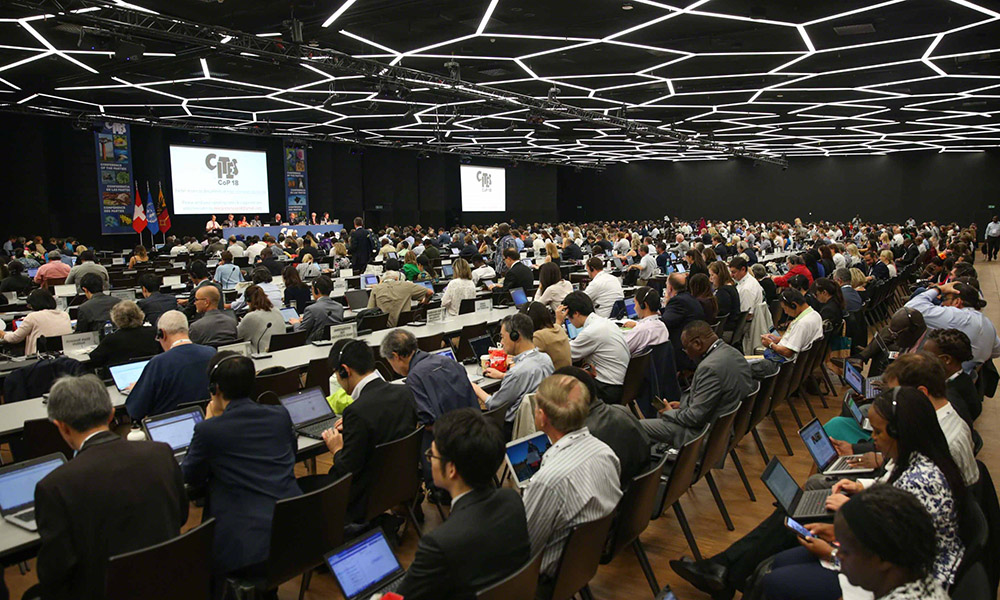
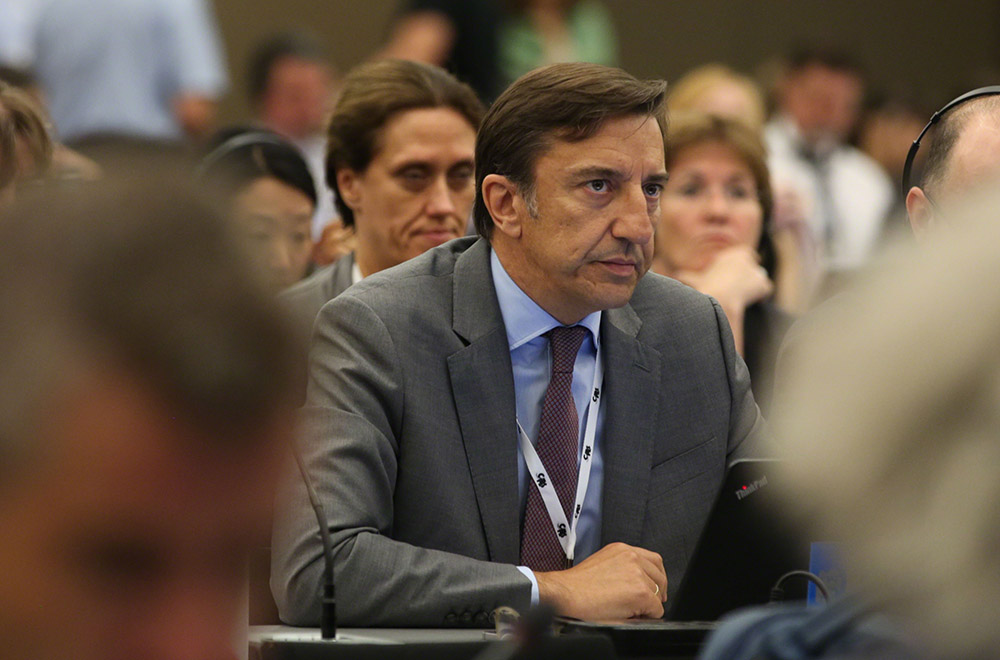
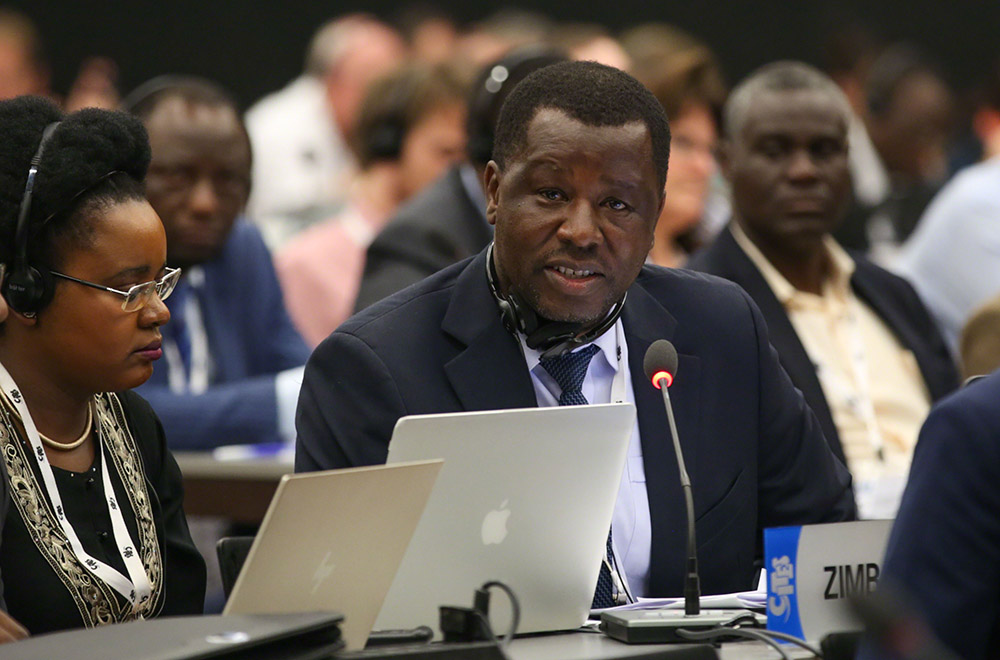

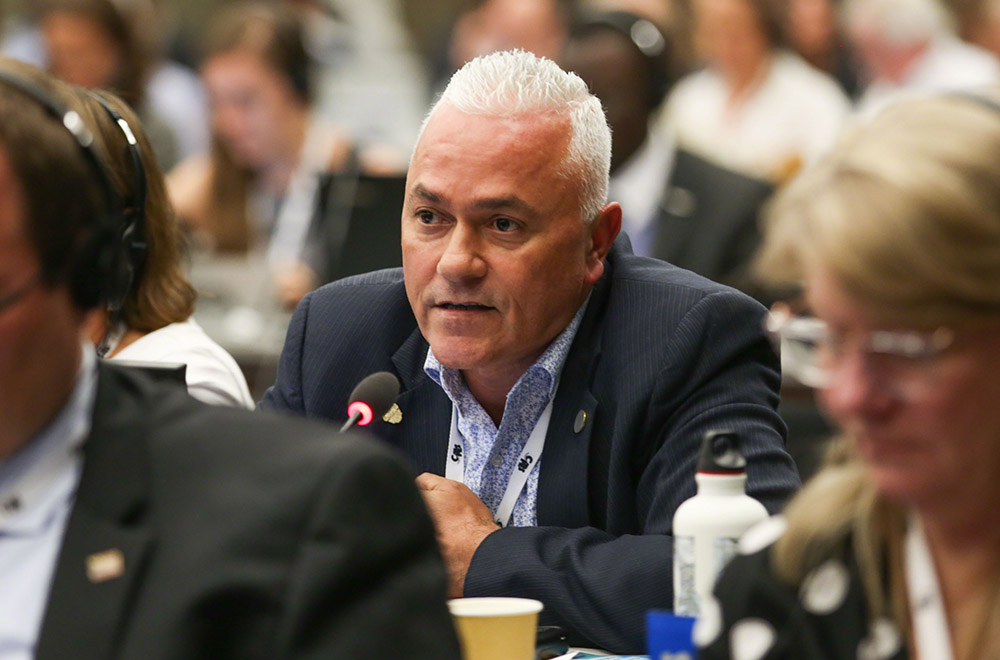
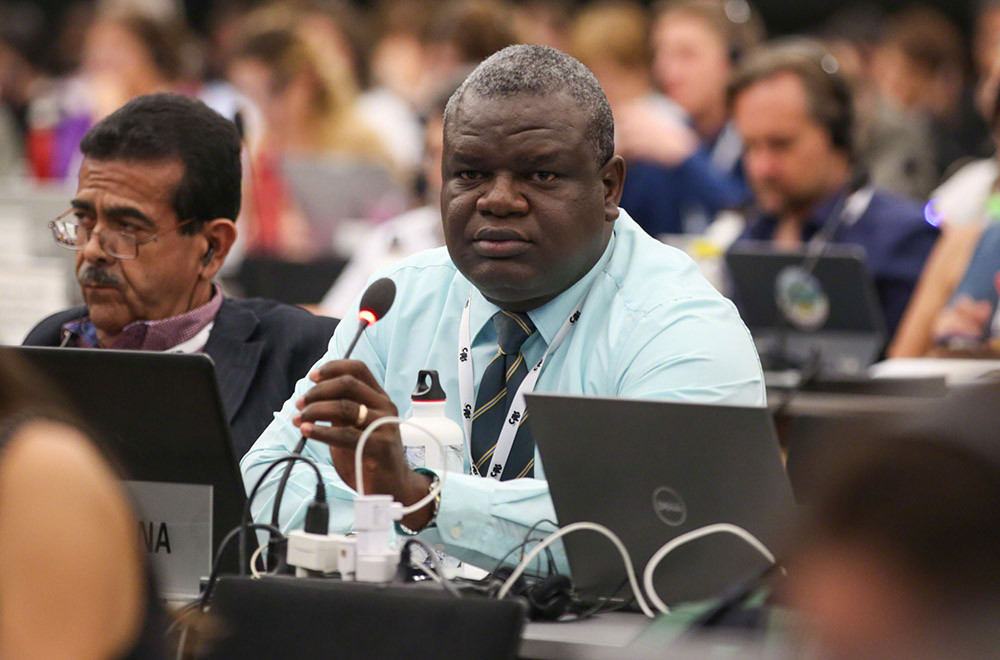
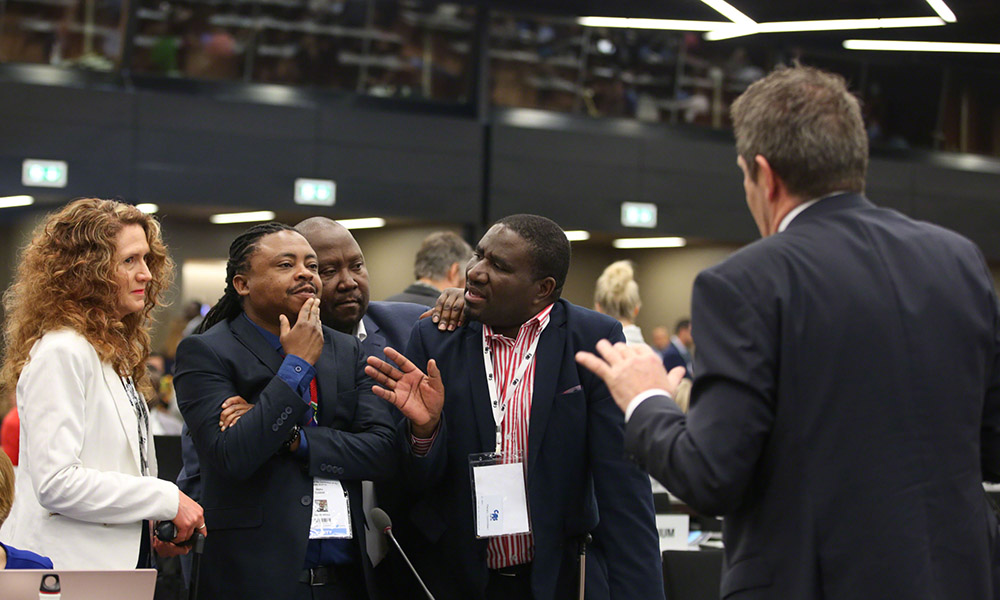
Highlights for Monday, 26 August 2019

Committee I began the morning under the sea, with the consideration of proposals on mako sharks, guitarfishes, wedgefishes and sea cucumbers.
Mexico introduced the proposal to include Shortfin mako sharks and Longfin mako sharks in Appendix II. Co-proponents Gabon, Costa Rica, EU, and others stressed that the current scientific evidence available makes clear the urgent need for regulation, recognizing that existing voluntary sustainable use measures, including those of regional fisheries management organizations (RFMOs), are ineffective. New Zealand, Antigua and Barbuda, Malaysia, Japan, and others opposed this listing on the basis that global Mako shark populations are more robust than suggested by the proponents, pointing to the conclusions of a recent Food and Agriculture Organization of the UN (FAO) report. In a secret ballot, Committee I adopted the proposal, with 102 in favor and 40 against.
Senegal introduced the proposal to list guitarfishes under Appendix II given declines caused by widespread and largely unmanaged fisheries. Fiji, Nigeria, Comoros, the US, and others supported the proposal, highlighting the need for trade regulation. St. Kitts and Nevis, Japan, and Malaysia opposed it, with Malaysia and China asking for secret ballot voting. In a secret ballot, Committee I voted to adopt the proposal, with 109 in favor and 30 against.
Sri Lanka introduced the proposal to list wedgefishes in Appendix II, arguing that an Appendix II listing would raise awareness of the species’ vulnerability and facilitate greater regional cooperation to ensure sustainable use. Egypt, Fiji, Kenya, and other co-proponents argued that an Appendix II listing would have important conservation benefits given the high value of wedgefish fins in international trade. Indonesia, Malaysia and Japan opposed the proposal, pointing to the inconclusive data on the status of global wedgefish stocks, as found by an FAO expert panel report, and the significant implementation challenges implicated by an Appendix II listing. In a secret ballot, Committee I voted to adopt the proposal, with 112 in favor and 30 against.
In the afternoon, delegates considered proposals on otters, southern white rhino, and mammoths, among others.
Committee II meanwhile discussed pangolins, the African grey parrot, and tortoises and freshwater turtles, among other matters. The Committee considered a proposal for pangolin range States to develop in situ conservation and management programs, and for the Secretariat to develop conversion parameters that will enable reliable determination of the number of animals associated with the quantity of pangolin scales seized. Several Parties highlighted the large seizures of illegally traded pangolin in recent months, and China reported that pangolin scales from its seizures are now available for controlled use in designated hospitals and through registered doctors. Many expressed support for conservation activities in range States, and some also called for increased enforcement and demand-reduction activities.
The Plants Committee presented its work on developing a definition of the term ‘artificially propagated’, and Parties in Committee II welcomed the introduction of a new source code ‘Y’ to refer to the assisted production of plants that are neither ‘artificially propagated’ nor ‘wild’, as they are propagated or planted in an environment with some level of human intervention. Georgia noted the new source code would benefit the trade in snowdrop bulbs, which grow in areas where maize and hazelnut are cultivated, supporting rural livelihoods.
+ Visit the web coverage for Monday, 26 August 2018
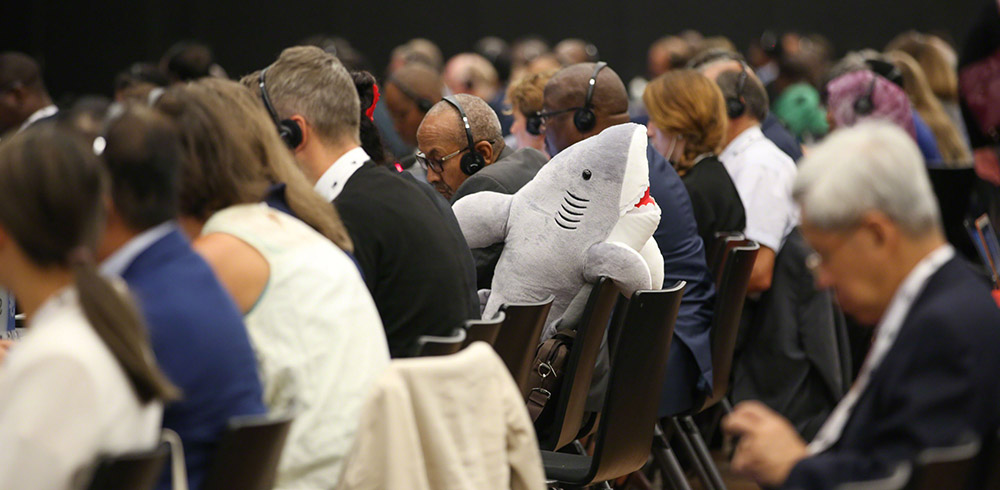
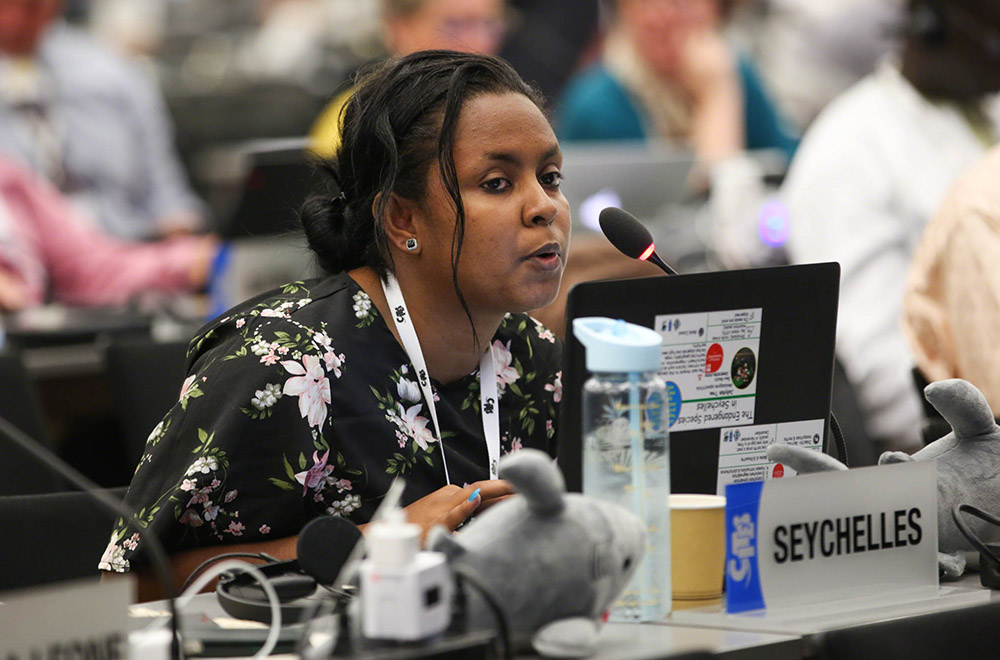
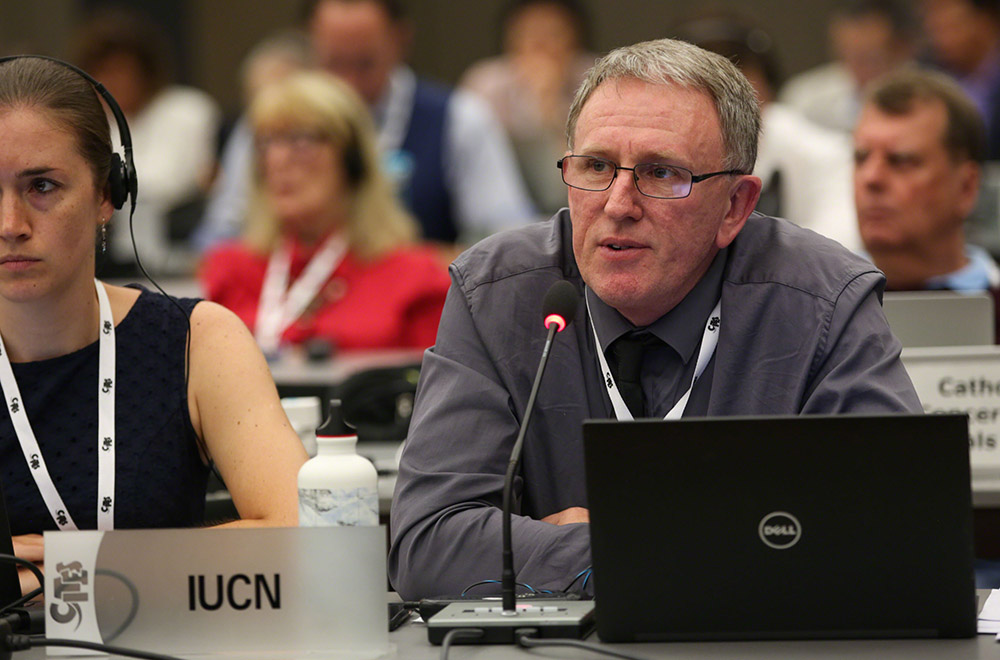

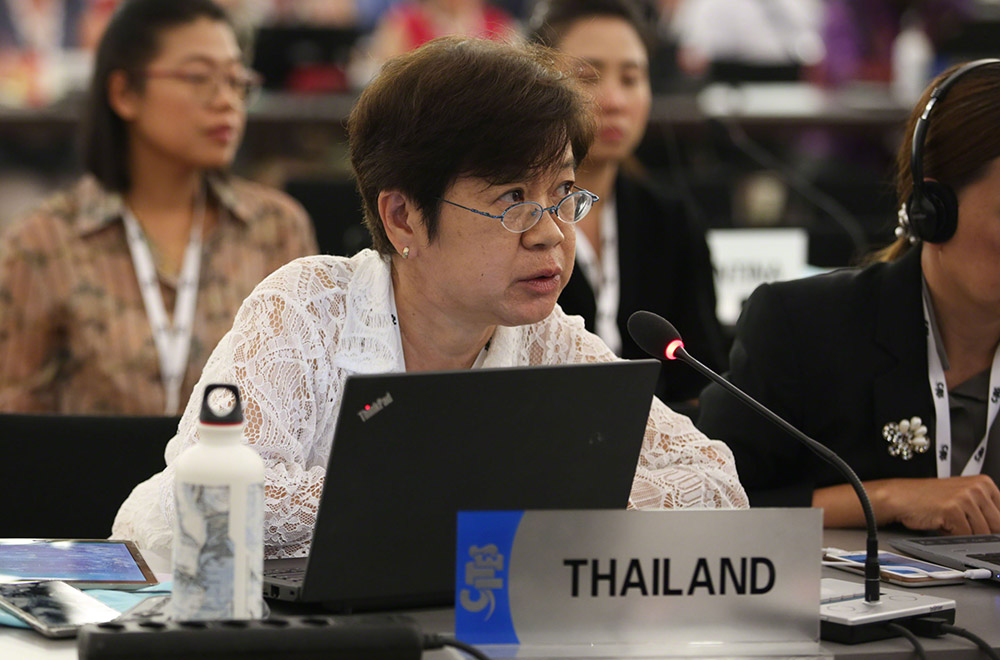
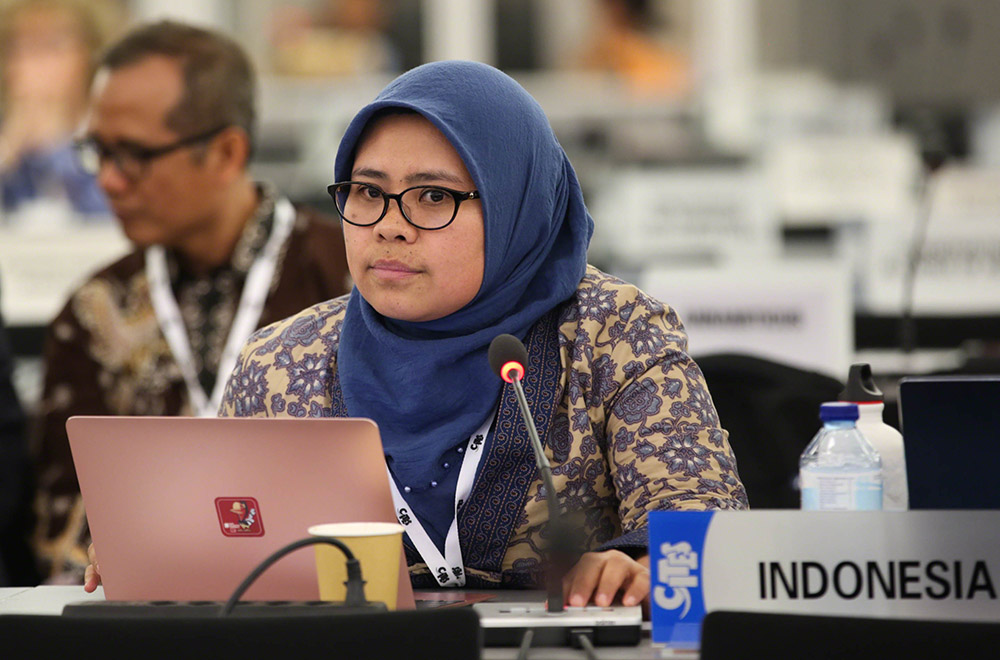
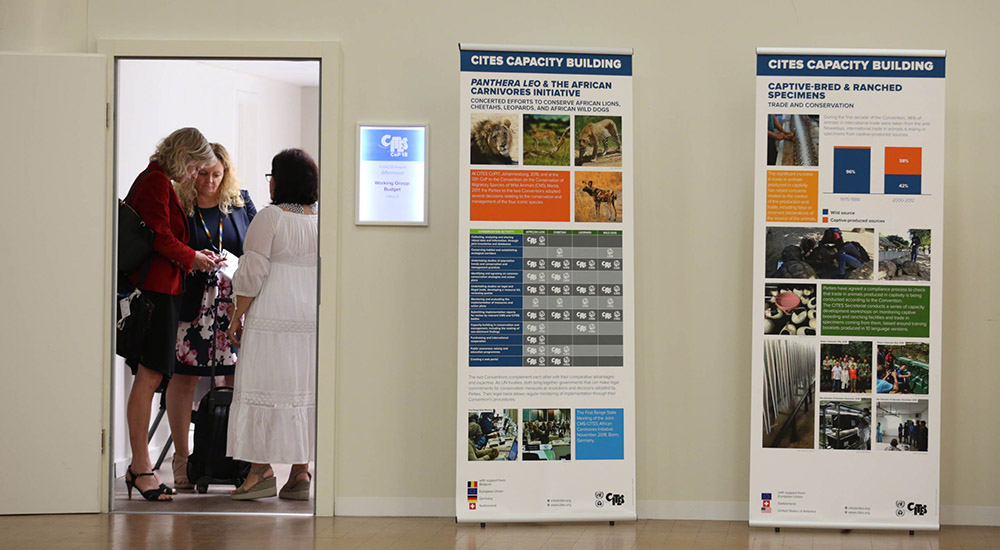
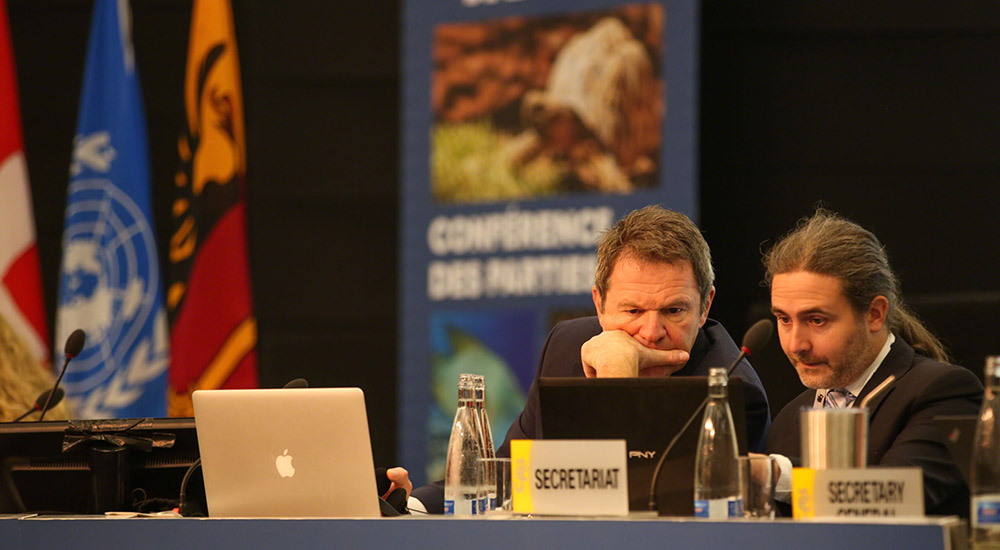
Highlights for Sunday, 25 August 2019

Committee I began the morning under the sea, with the consideration of proposals on mako sharks, guitarfishes, wedgefishes and sea cucumbers.
Mexico introduced the proposal to include Shortfin mako sharks and Longfin mako sharks in Appendix II. Co-proponents Gabon, Costa Rica, EU, and others stressed that the current scientific evidence available makes clear the urgent need for regulation, recognizing that existing voluntary sustainable use measures, including those of regional fisheries management organizations (RFMOs), are ineffective. New Zealand, Antigua and Barbuda, Malaysia, Japan, and others opposed this listing on the basis that global Mako shark populations are more robust than suggested by the proponents, pointing to the conclusions of a recent Food and Agriculture Organization of the UN (FAO) report. In a secret ballot, Committee I adopted the proposal, with 102 in favor and 40 against.
Senegal introduced the proposal to list guitarfishes under Appendix II given declines caused by widespread and largely unmanaged fisheries. Fiji, Nigeria, Comoros, the US, and others supported the proposal, highlighting the need for trade regulation. St. Kitts and Nevis, Japan, and Malaysia opposed it, with Malaysia and China asking for secret ballot voting. In a secret ballot, Committee I voted to adopt the proposal, with 109 in favor and 30 against.
Sri Lanka introduced the proposal to list wedgefishes in Appendix II, arguing that an Appendix II listing would raise awareness of the species’ vulnerability and facilitate greater regional cooperation to ensure sustainable use. Egypt, Fiji, Kenya, and other co-proponents argued that an Appendix II listing would have important conservation benefits given the high value of wedgefish fins in international trade. Indonesia, Malaysia and Japan opposed the proposal, pointing to the inconclusive data on the status of global wedgefish stocks, as found by an FAO expert panel report, and the significant implementation challenges implicated by an Appendix II listing. In a secret ballot, Committee I voted to adopt the proposal, with 112 in favor and 30 against.
In the afternoon, delegates considered proposals on otters, southern white rhino, and mammoths, among others.
Committee II meanwhile discussed pangolins, the African grey parrot, and tortoises and freshwater turtles, among other matters. The Committee considered a proposal for pangolin range States to develop in situ conservation and management programs, and for the Secretariat to develop conversion parameters that will enable reliable determination of the number of animals associated with the quantity of pangolin scales seized. Several Parties highlighted the large seizures of illegally traded pangolin in recent months, and China reported that pangolin scales from its seizures are now available for controlled use in designated hospitals and through registered doctors. Many expressed support for conservation activities in range States, and some also called for increased enforcement and demand-reduction activities.
The Plants Committee presented its work on developing a definition of the term ‘artificially propagated’, and Parties in Committee II welcomed the introduction of a new source code ‘Y’ to refer to the assisted production of plants that are neither ‘artificially propagated’ nor ‘wild’, as they are propagated or planted in an environment with some level of human intervention. Georgia noted the new source code would benefit the trade in snowdrop bulbs, which grow in areas where maize and hazelnut are cultivated, supporting rural livelihoods.
+ Visit the web coverage for Sunday, 25 August 2018

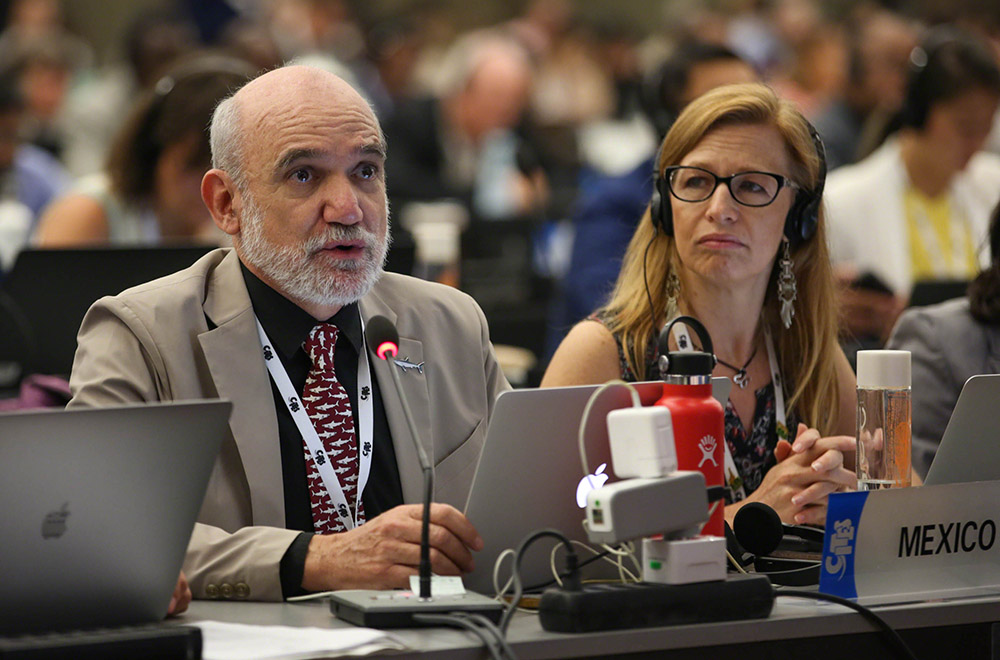
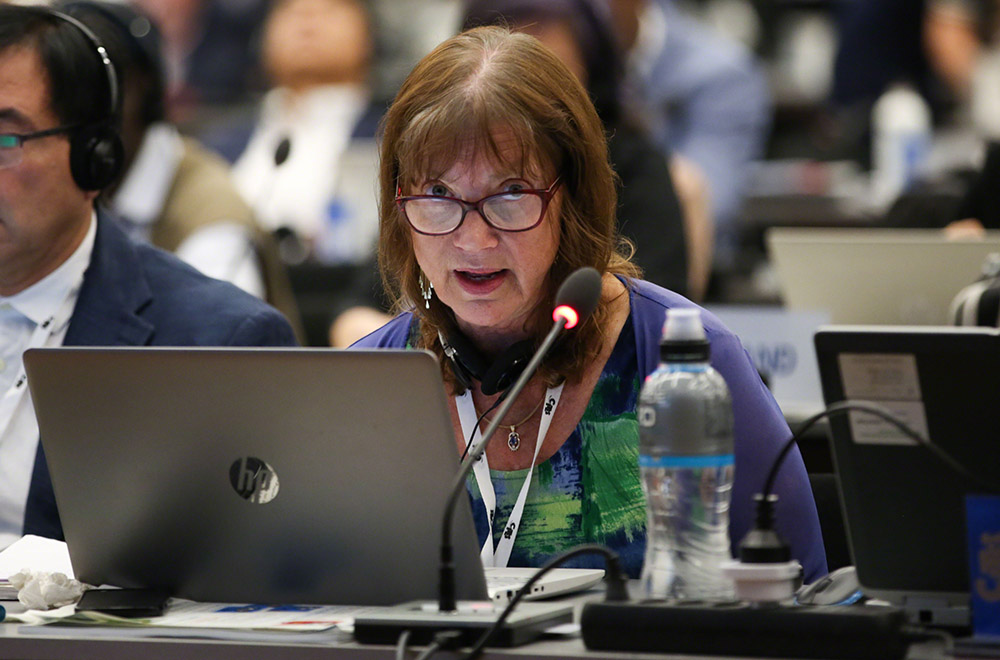
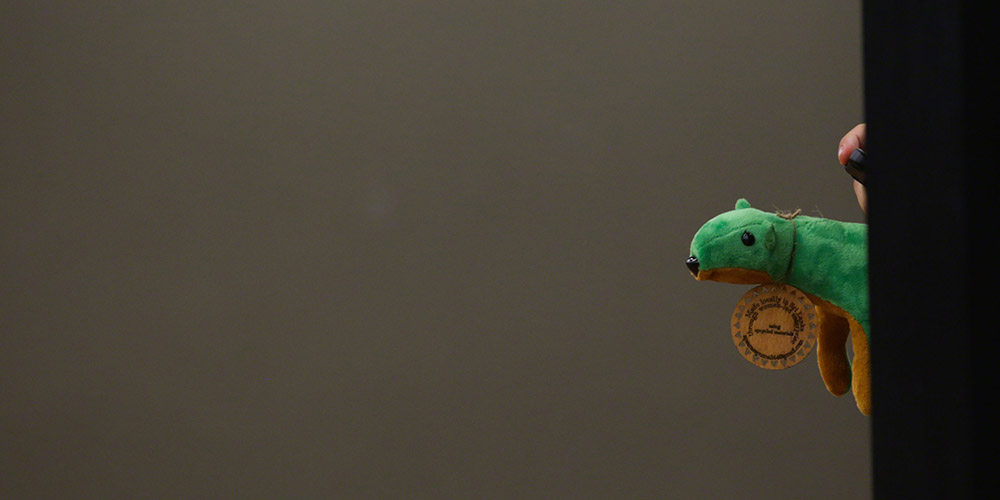


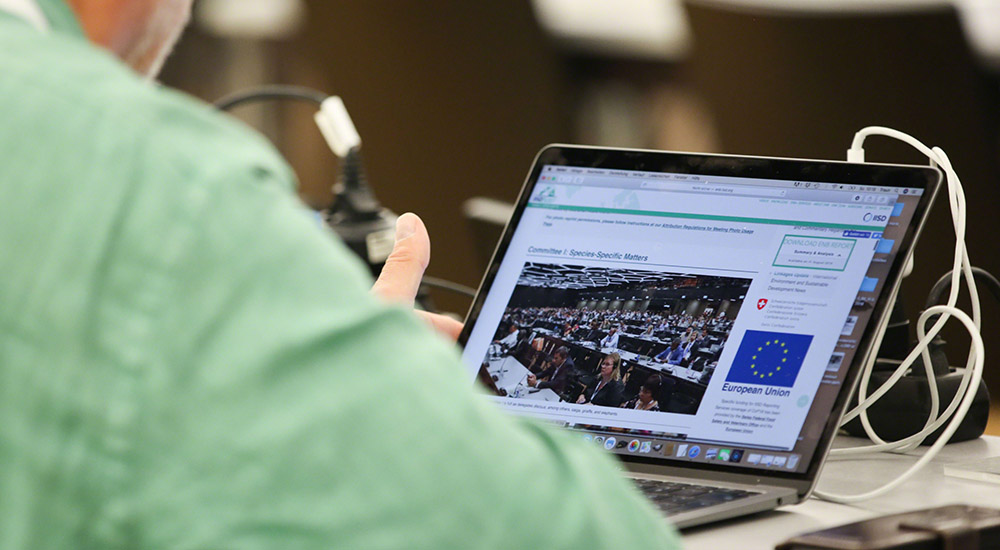
Highlights for Thursday, 22 August 2019

In Committee I, Mongolia introduced the proposal on Saiga antelope to transfer the species from Appendix II to Appendix I. The US clarified the confusion over the taxonomy in the proposal as it originally referred to the IUCN taxonomy, and under Rule 24.2 requested to amend the proposal to make it more precise by including both Saiga tatarica and Saiga borealis. Chair Hay accepted this reading of Rule 24.2 and confirmed the proposal would be considered to cover all saiga.
The Russian Federation, Kazakhstan, the EU, and China opposed the proposal if it were to include all populations of saiga, pointing to the growing numbers of the species in some regions and national moratoria on hunting. Bahrain, Côte d’Ivoire, Guatemala, and Qatar supported the proposal. The US reiterated that the co-proponents would oppose a split-listing as this would hinder enforcement. She proposed amending the scope to include an annotation stating: “zero export quota is established for wild specimens traded for commercial purposes,” to ensure wild specimens are not internationally traded, giving the populations a chance to recover and time to study the mass die-offs. South Africa opposed this amendment, suggesting that CITES is not the correct tool for strategies for this species. The Russian Federation, Kazakhstan, the EU, and Uzbekistan and others supported this proposed annotation. Committee I agreed to the proposal by consensus, as amended with a zero-export quota on all saiga species.
Chad introduced the proposal to list giraffe under Appendix II, noting the 40% decline in populations over 30 years. New Zealand and the US also supported the proposal. Botswana and several southern African countries, opposed the proposal, arguing that populations are stable in many countries, and countering the claim that international trade is affecting their numbers. He proposed that specific populations should be excluded from the listing. Kenya noted that an Appendix II listing would allow for monitoring measures and would not prevent trade from taking place. The Committee voted to list giraffe under Appendix II, with 106 in favor and 21 against.
Zambia introduced the proposal to down-list Zambian elephant populations from Appendix I to Appendix II, recalling that under the Nagoya protocol local communities have the right to benefit from wildlife resources. Committee I voted against Zambia’s proposal. The Committee considered two further proposals concerning elephant populations, both of which did not pass.
In Committee II, delegates discussed regulation of trade issues such as simplification procedures, traceability, and specimens produced through biotechnology. At the end of the day, the Secretariat introduced the report on illegal trade in cheetahs, highlighting the work of the intersessional working group to develop the CITES cheetah trade resource kit and called for further funding for this work. She also noted the proposal by the in-session lion working group to establish a big cats task force, noting that matters related to illegal trade in cheetahs could be addressed by such task force. Kuwait, supported by Oman, United Arab Emirates (UAE), and Bahrain, emphasized that the illegal trade in cheetah in the Gulf states has decreased due to enforcement efforts and public campaigns and he supported the proposal that illegal trade in cheetah could be addressed by the proposed big cats task force. Somalia shared the challenges they encounter in dealing with illegal trade including to UAE and South Africa. South Africa denied that cheetahs are illegally imported into South Africa. Tanzania and Burkina Faso supported the recommendations submitted by Kenya and Ethiopia in CoP18 Information Document 73.
+ Visit the web coverage for Thursday, 22 August 2018

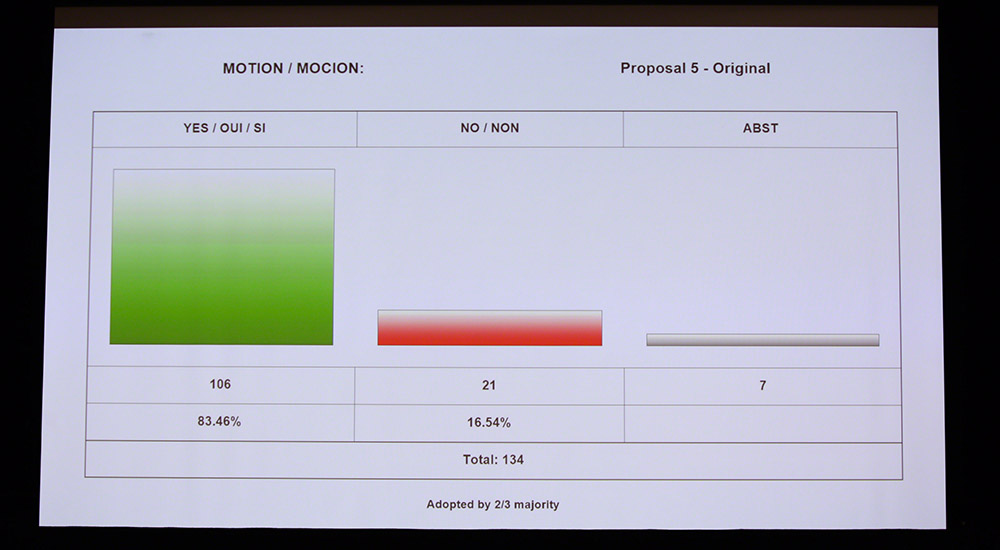
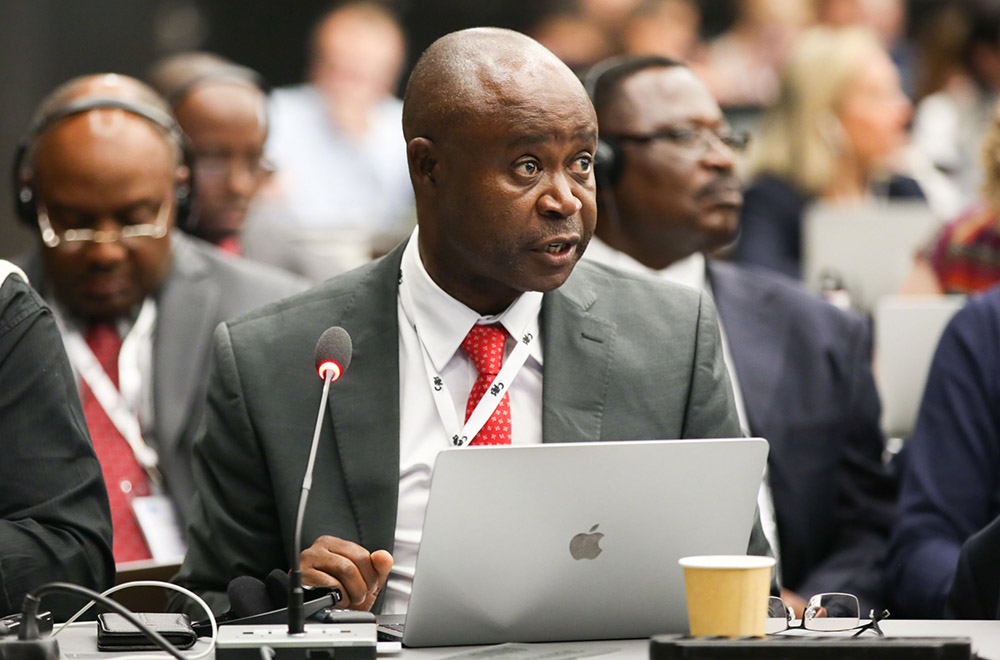
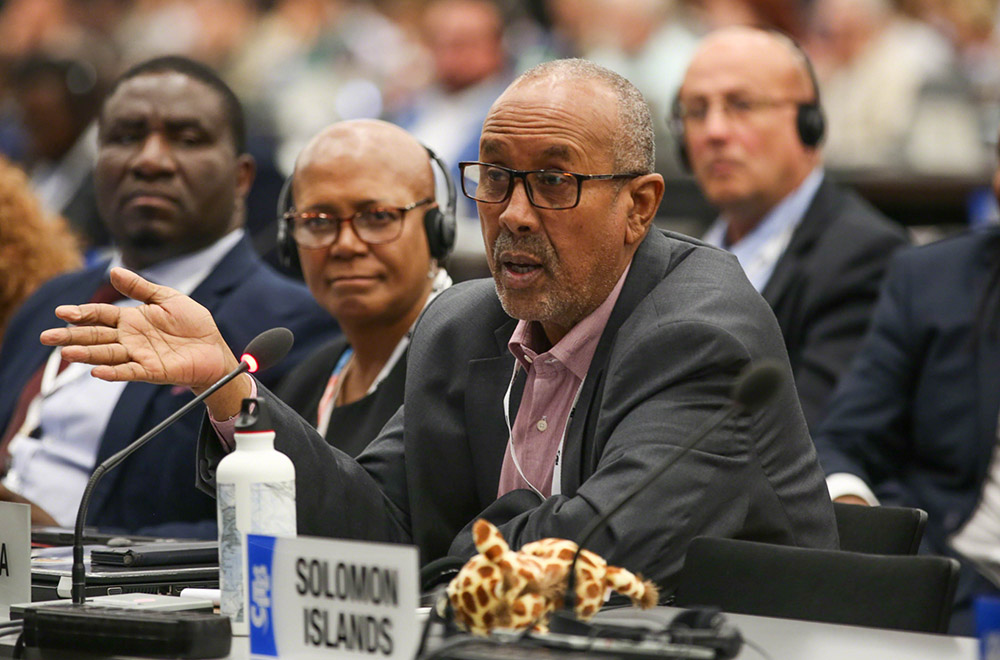
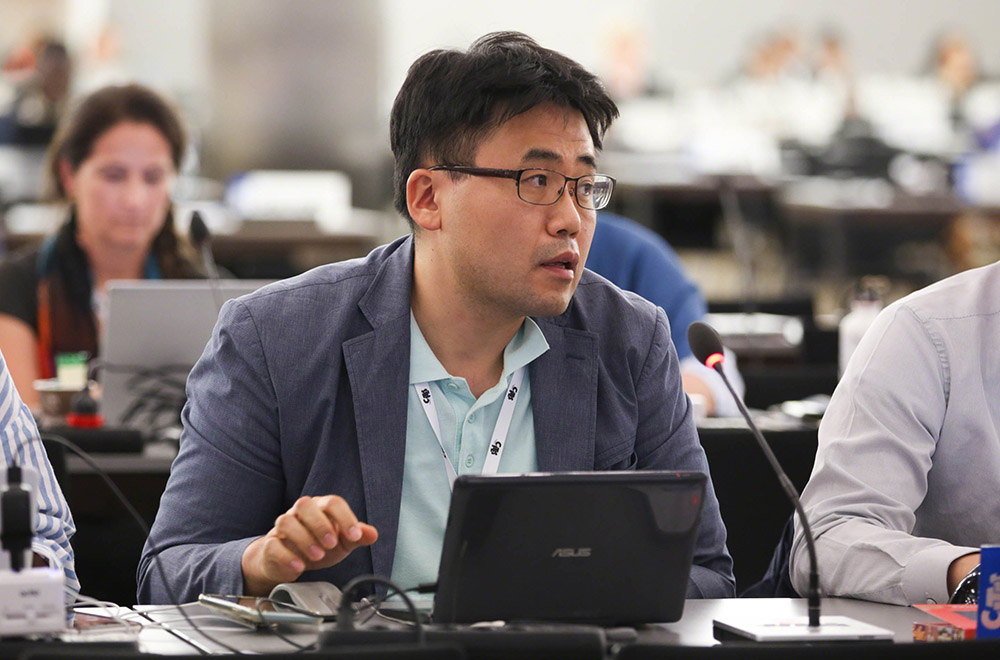
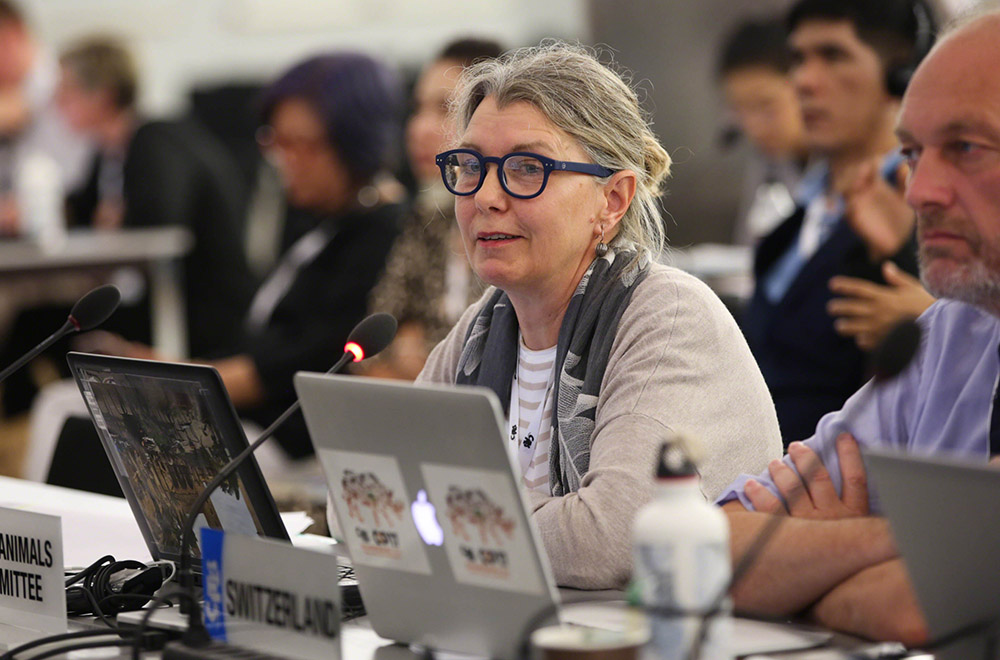
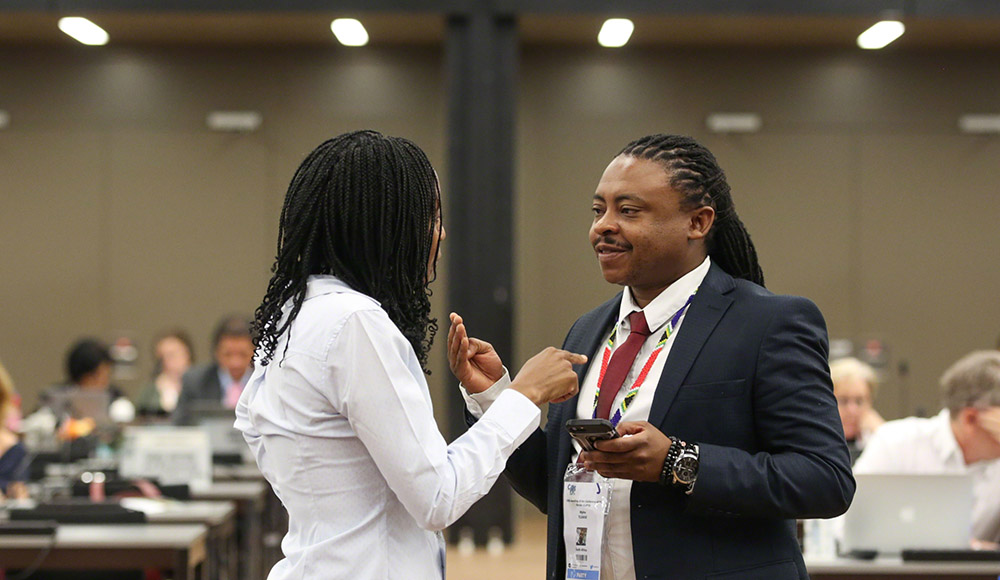
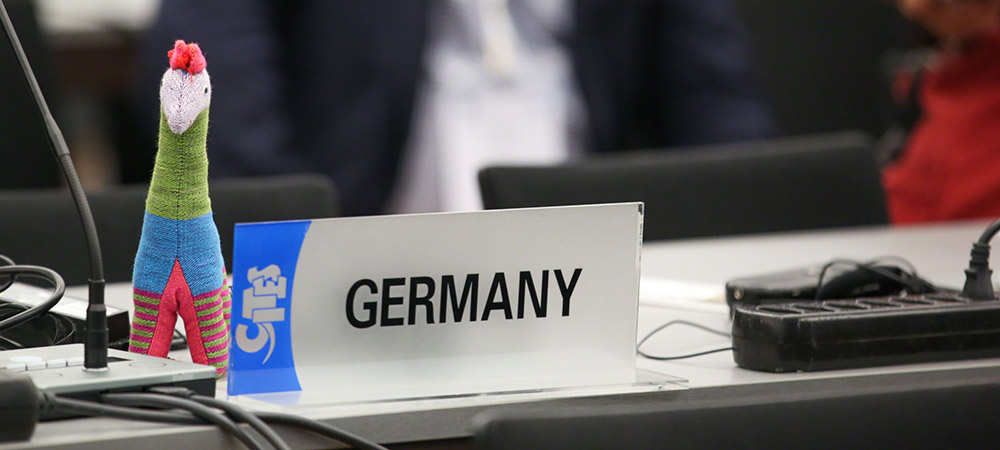
Highlights for Wednesday, 21 August 2019
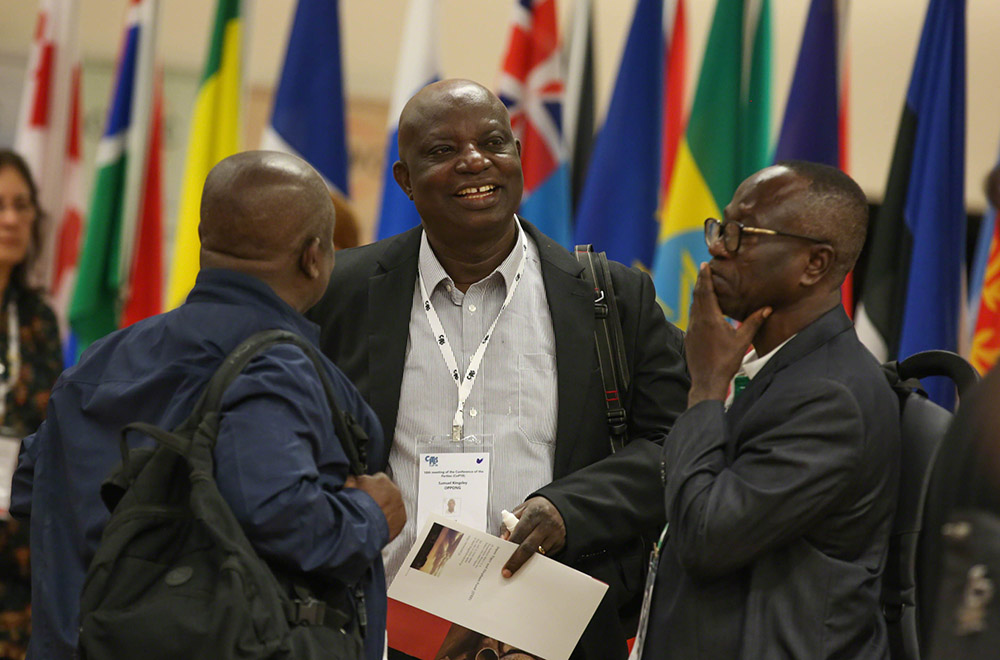
In the morning, Committee I of CITES CoP18 began consideration of listing proposals. The first item discussed was the Mulanje cedar, proposed to be listed in Appendix II, given its critically endangered status. The Committee agreed.
A proposal to remove North Indian rosewood from Appendix II was opposed because of the look-alike issues that arise in identifying the species of traded wood products.
Canada and the EU introduced a proposal on Rosewoods, Palisanders and Bubingas, with the EU explaining that the proposal maintains an exemption for small finished products, while addressing the implementation challenge associated with differentiating commercial and non-commercial exports, and applies the maximum weight of wood for small finished products to single items rather than to shipments.
Senegal, the Democratic Republic of Congo (DRC), the Russian Federation, Tanzania, Republic of Korea, and Indonesia supported the revisions. Several countries expressed concern about the introduction of an exemption for finished products to a maximum weight of 500g per item.
Committee I established a drafting group to develop further revisions.
The agenda of Committee II was, in the words of Chair Craig Hoover, a “big gray day” as delegates considered agenda items on elephant and rhino.
Many expressed confidence in the Monitoring the Illegal Killing of Elephants (MIKE) process, though Burkina Faso and Kenya, supported by several African countries and Israel, expressed concern about the independence and transparency of the analysis, calling for an open and transparent peer-review of MIKE’s methodology.
Similarly, several transit countries, such as Singapore and UAE, and others questioned the transparency of the Elephant Trade Information System (ETIS) methodology and categorization process, while China and DRC lamented the report’s neglect of their domestic efforts to combat the illegal trade in ivory.
Kenya then presented the document concerning proposed amendments to resolution Conference 10.10 (Rev. CoP17) on the closure of domestic ivory markets, with a view to closing all remaining legal domestic ivory markets.
Gabon, Burkina Faso, and other member states of the African Elephant Coalition, with Israel, supported the proposal and emphasized that legal domestic ivory markets drive demand, complicate enforcement efforts and are linked to poaching and the illegal ivory trade.
Namibia, eSwatini, and other southern African countries expressed strong opposition, stressing that there was no evidence of a link between legal domestic markets and poaching. They questioned the value of re-opening the issue of domestic markets given the extensive debates and compromise achieved at CoP17. Thailand supported the view that closure of all domestic markets was unnecessary, citing, as an example, its own successful implementation of a National Ivory Action Plan (NIAP).
Chile, EU and Japan and several others noted that this proposal falls outside the scope of the Convention and might pave the way for similar restrictive measures to be adopted for the legal domestic markets of other CITES-listed species.
The US also opposed the proposed amendments, underscoring that focus should remain on assisting parties in effectively implementing Resolution Conference 10.10 in its current form, but acknowledged the importance of monitoring the impact of these markets.
Delegates in Committee II then began a lengthy debate on rhino issues before calling it a day, and moving on to Bureau and working group meetings with their colleagues from Committee I.
+ Visit the web coverage for Wednesday, 21 August 2018
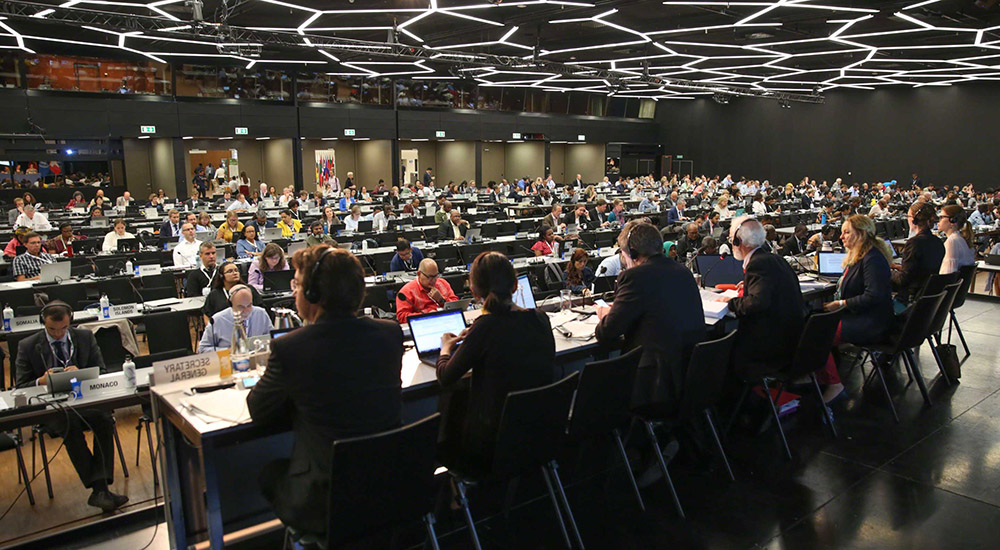
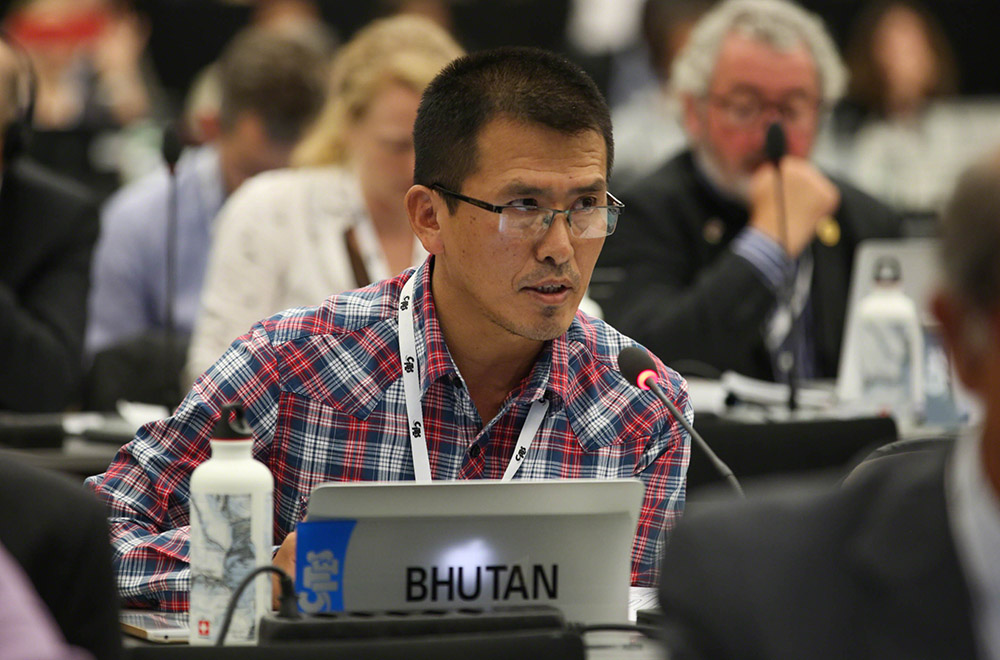
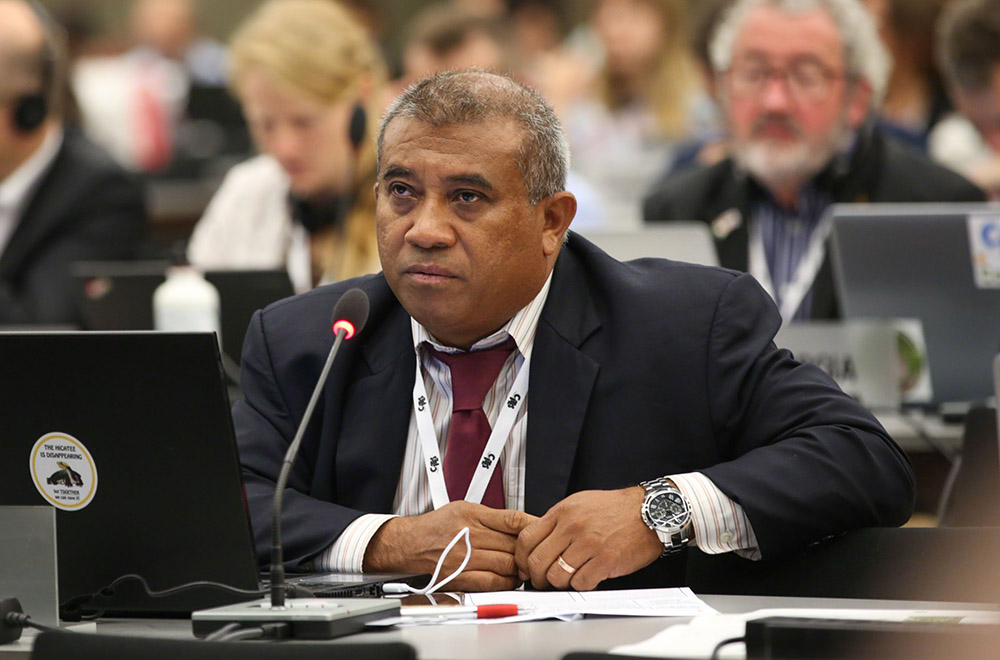

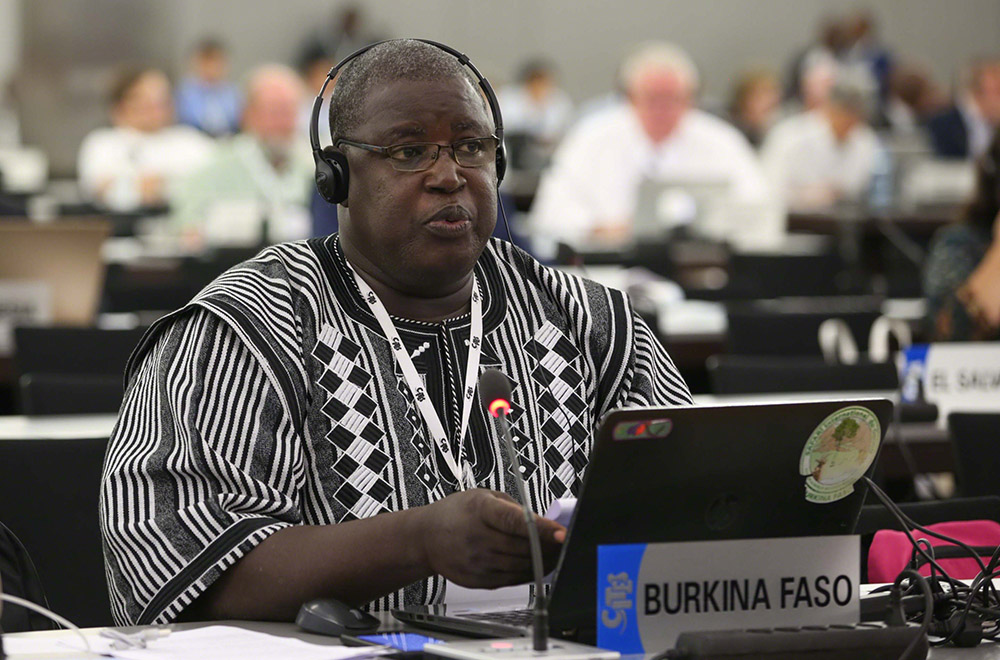
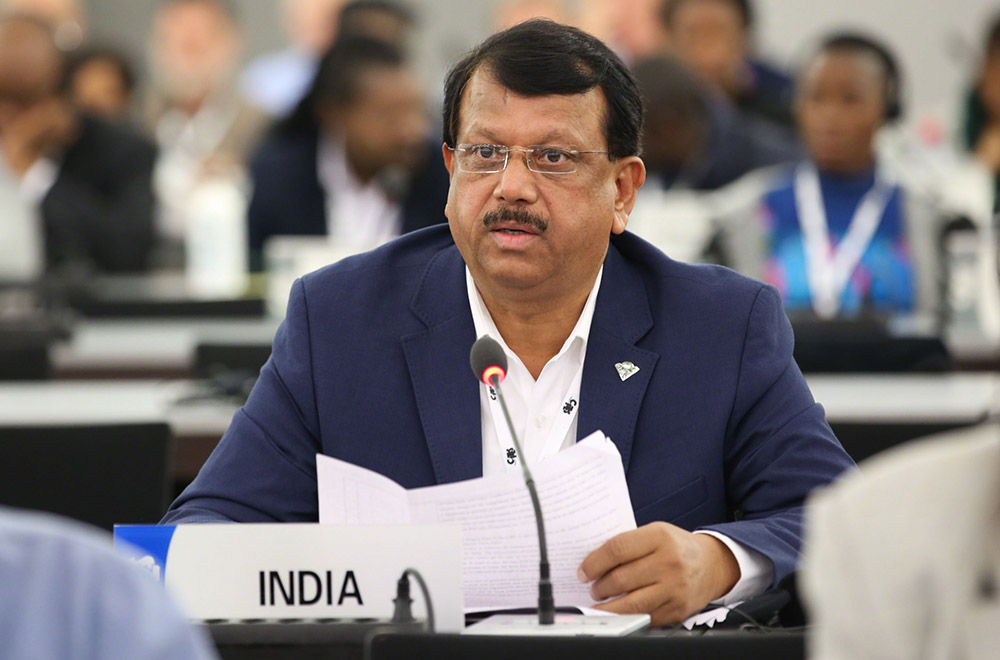
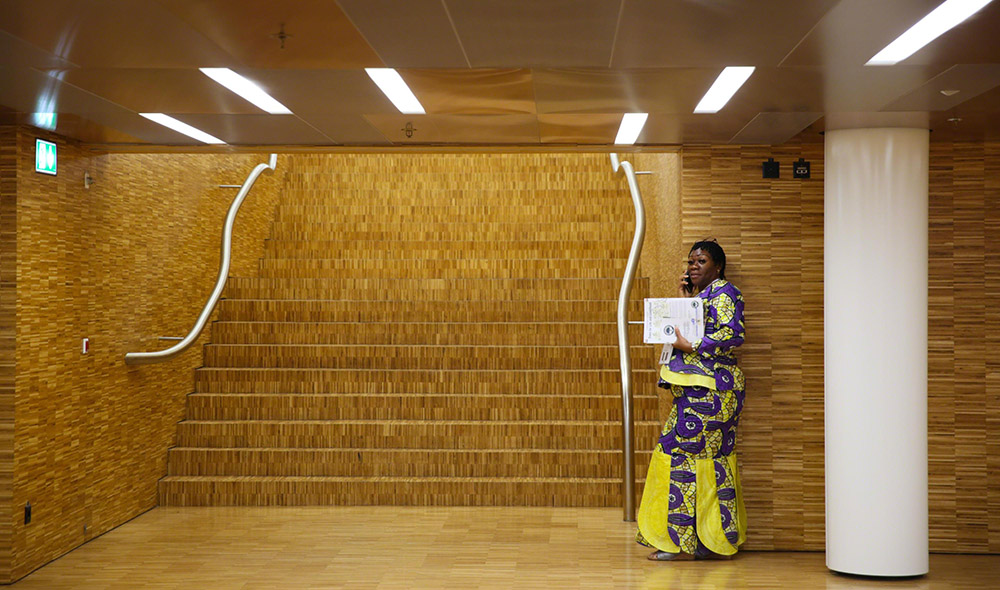
Highlights for Tuesday, 20 August 2019

Committee II did not get their requested disco ball but managed to rock and roll through the items assigned to its agenda. Many parties reaffirmed the importance of demand reduction in combating illegal wildlife trade. With livelihoods and rural communities gaining greater attention within CITES, Committee II accepted the potential focus on livelihoods of indigenous peoples and rural and local communities in a future World Wildlife Day.
The Committee also expressed support for youth engagement in CITES, with many parties sharing their own experiences.
On guidance for making legal acquisition findings, parties recognized that non-binding guiding principles in the draft resolution would be an important resource for management authorities, while others appreciated that the resolution clearly identifies tasks for importing states.
In Committee I, there was talk about the importance of “singing for love," as delegates addressed the plight of songbirds. The US highlighted the declining numbers of songbirds due to multiple threats. She mentioned the illegal trade for singing competitions and gave an example of a recent seizure of songbirds in the US bound for such competitions. Therefore, she said, a further study on the trade and conservation status of songbirds was needed, though many species are not currently CITES-listed. She thus encouraged parties to consider Appendix III listings. Benin, with Senegal and Ukraine, expressed strong support of the songbird document and its proposed workshop. Bird Life International echoed this support, stating that proactive work has been done for other non-CITES listed species in the past which can help inform conservation management. Bird Life International added that action should not be delayed where species status is already known. Chair Rod Hay struck a working group, chaired by the EU, to review and revise draft decisions proposed by the US.
On great apes, many highlighted the serious threats facing populations, including from the trade in exotic pets that are advertised openly online. The Committee established a drafting group, chaired by the US, to review reporting obligations on great apes to the Standing Committee and Conference of Parties.
Malaysia requested all parties to adopt legislation and controls to eliminate poaching of helmeted hornbill and trade in parts, calling on consumer states especially to monitor markets and take enforcement action as needed. Committee I established a working group to review the proposed amendments.
On African cherry, Plants Committee Chair Sinclair stated that specific funding has not been secured for a proposed workshop but that the work could be incorporated into a regional meeting in Africa. The EU, as a main importer of African cherry bark, stated his support of this document and the continued work on data collection for more sustainable management of the species. Committee I agreed to the document with minor amendments.
Committee I continued meeting into the evening, where it began to cover species listing proposals based on periodic review.
+ Visit the web coverage for Tuesday, 20 August 2018
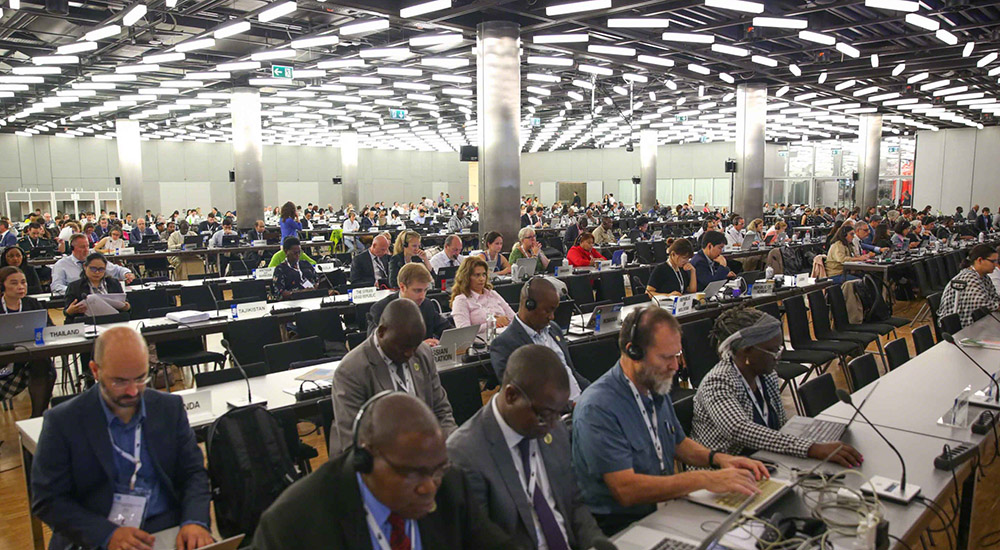
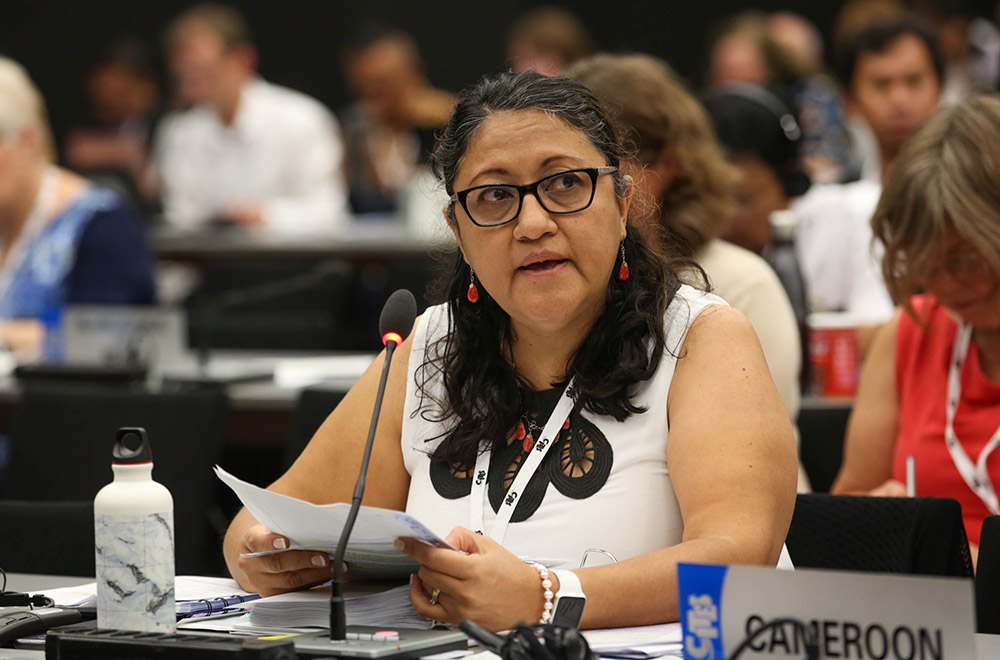
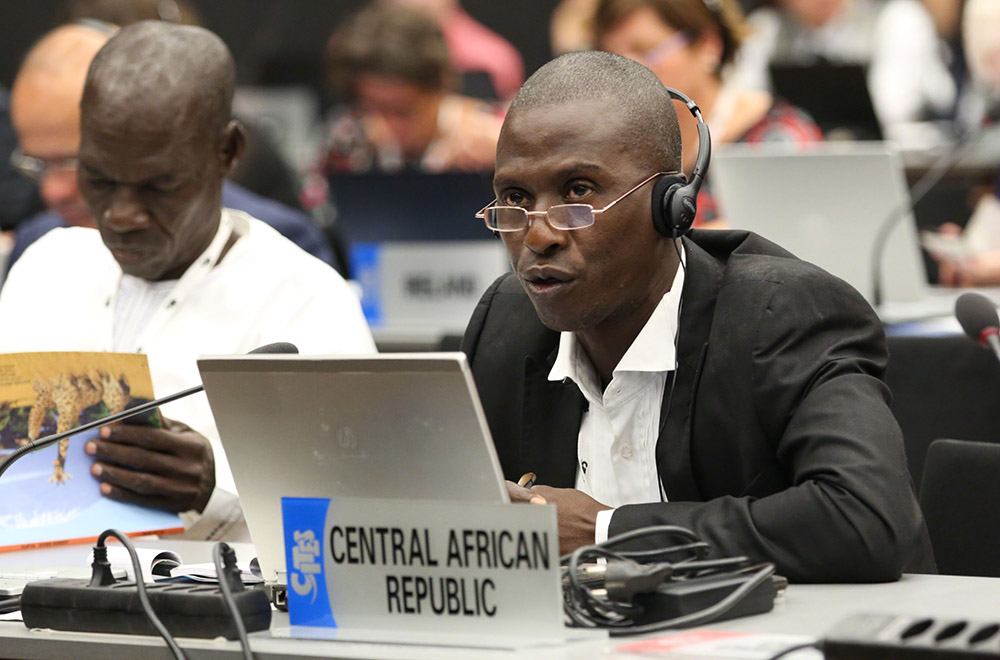
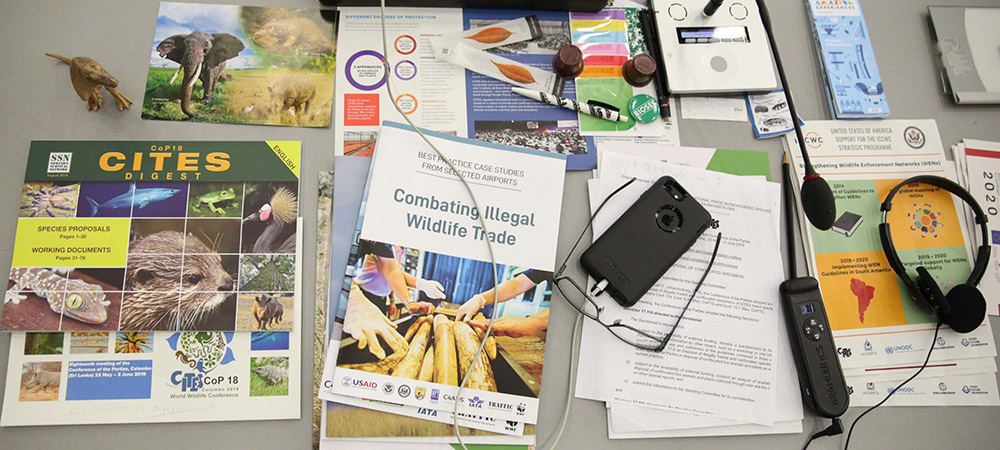
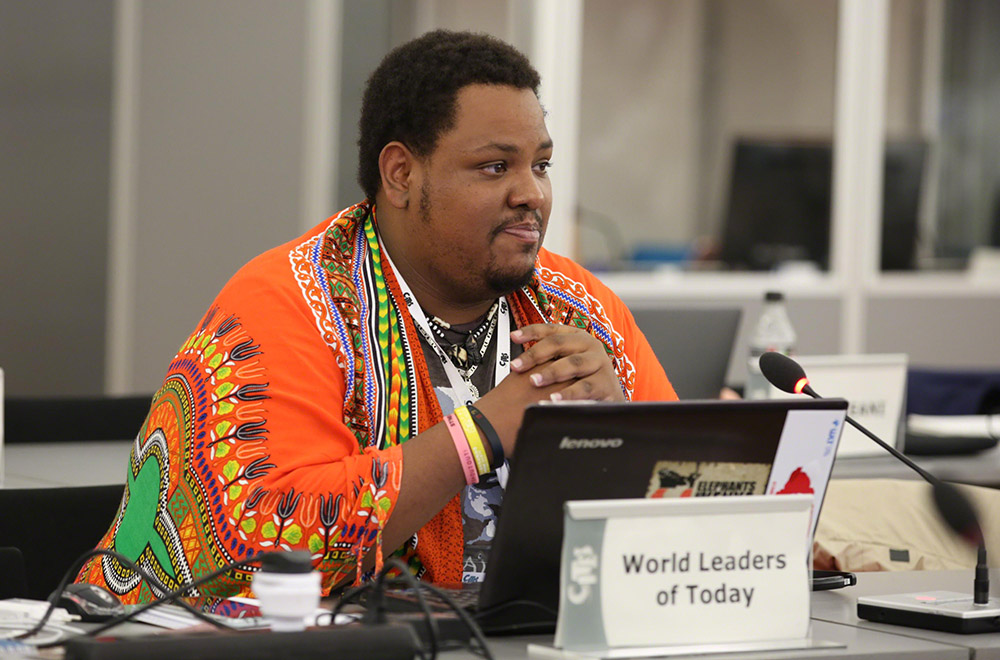
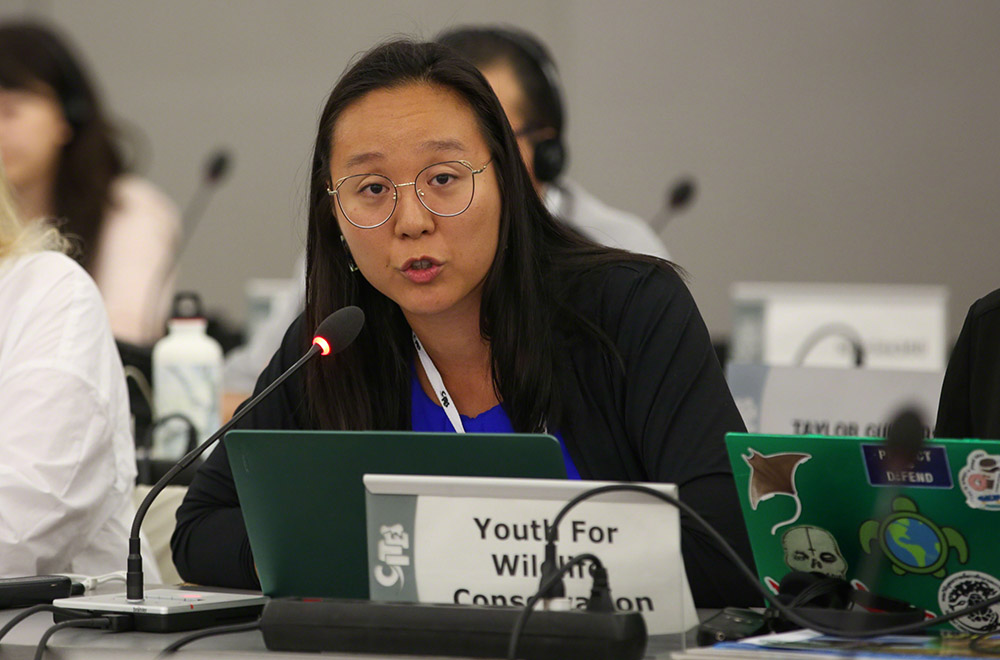

Highlights for Monday, 19 August 2019
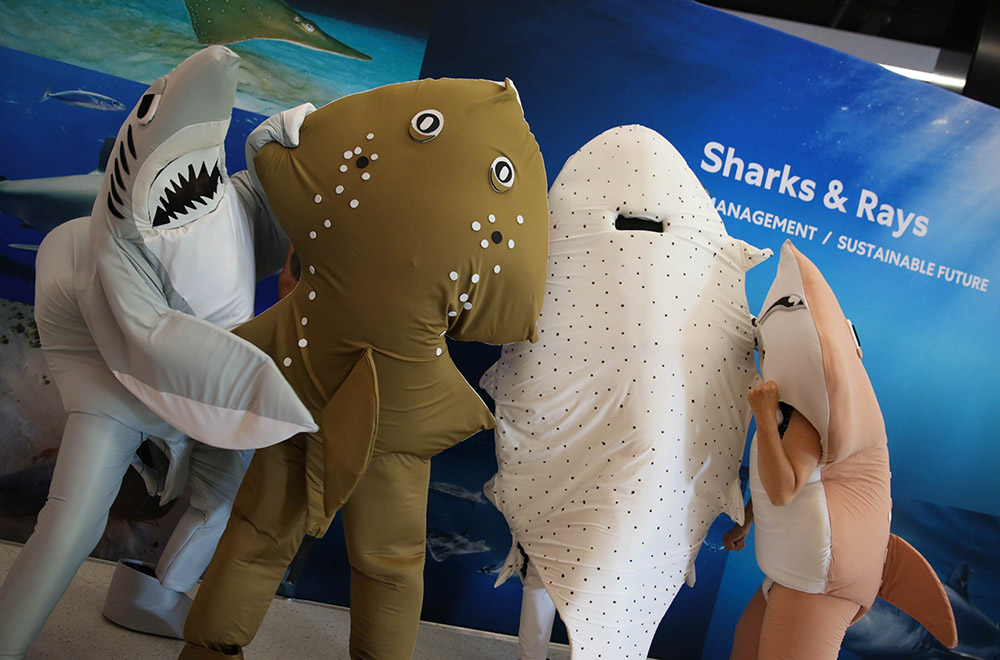
In resuming the meeting, Committee II Chair Craig Hoover noted that he would refrain from singing “to the relief of all.” He then moved on swiftly through a packed agenda that the Committee tackled diligently over three sessions, including an evening one. During the discussion on Guidance materials, activities, and tools aimed at enhancing Parties’ capacity to regulate bushmeat trade many, including EU, Norway, China, and the Convention for Biological Diversity (CBD) welcomed the use of the term “wild meat.” The US cautioned that the Convention should not lose sight of the negative impact of international commercial demand for wild meat.
Most of the morning session and part of the afternoon session in Committee II covered agenda items related to the role of rural communities and their engagement in CITES processes. Canada highlighted ways they involve rural and indigenous local communities in CITES and other processes. She proposed that CITES issue a notification asking parties how they involve such communities in CITES processes. The EU supported the Secretariat’s proposed amendment to include rural communities in the CITES national delegation. The Namibian Association of Community-Based Natural Resource Management Support Organisations (NACSO) emphasized that rural communities are the first line of defense against poaching and their involvement is essential to conserving wildlife. The need to harmonize the terminology was also addressed. A very long discussion, addressing some of the proposed amendments by China, Namibia, and Zimbabwe to the CITES and livelihoods and other relevant resolutions, focused on whether and how to take into consideration the impact of species listing proposals on rural communities and their livelihoods. Chair Hoover struck a working group to address amendments to relevant decisions and resolutions.
Committee I continued its discussions by addressing several marine species, including marine turtles, sharks, and rays. On eels, the US proposed text to clarify that traceability measures would apply to both live and dead eels. Algeria noted the country’s lack of expertise in conducting an inventory and requested technical support from the Animals Committee.
On humphead wrasse, Japan drew attention to how illegal fishing activities undermine the ongoing legal trade and management work for the species. World Wildlife Fund (WWF) drew attention to the ranching practices of Indonesia, stating that there is potential for sustainable management, but that the purpose code R should not be used for this trade and practice for the species.
On sharks, Peru, supported by Gabon and opposed by Japan and India, called for strengthening monitoring and improving identification of shark fin in transit. The Committee established a working group, chaired by New Zealand.
Peru then introduced the document on Titicaca water frogs, noting that this species faces increasing threats from illegal international trade, despite extensive regional conservation efforts. Costa Rica, on behalf of multiple Latin American parties, appraised the conservation efforts and conveyed strong support for the document. The US, with Canada supporting, added this might be better addressed with bilateral work considering that the frog is already listed in Appendix I.
Committee II reconvened in the evening to discuss agenda items on compliance and enforcement.
+ Visit the web coverage for Monday, 19 August 2018
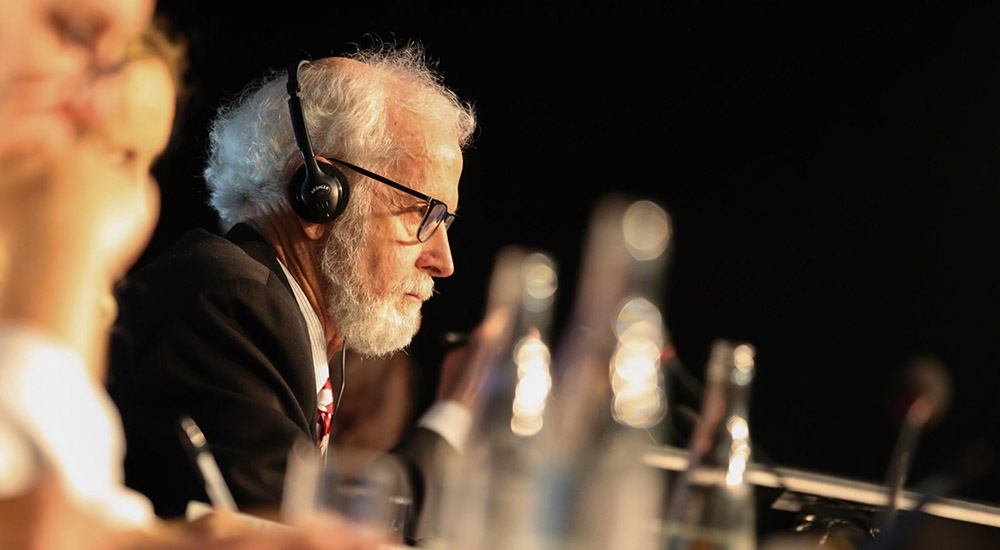
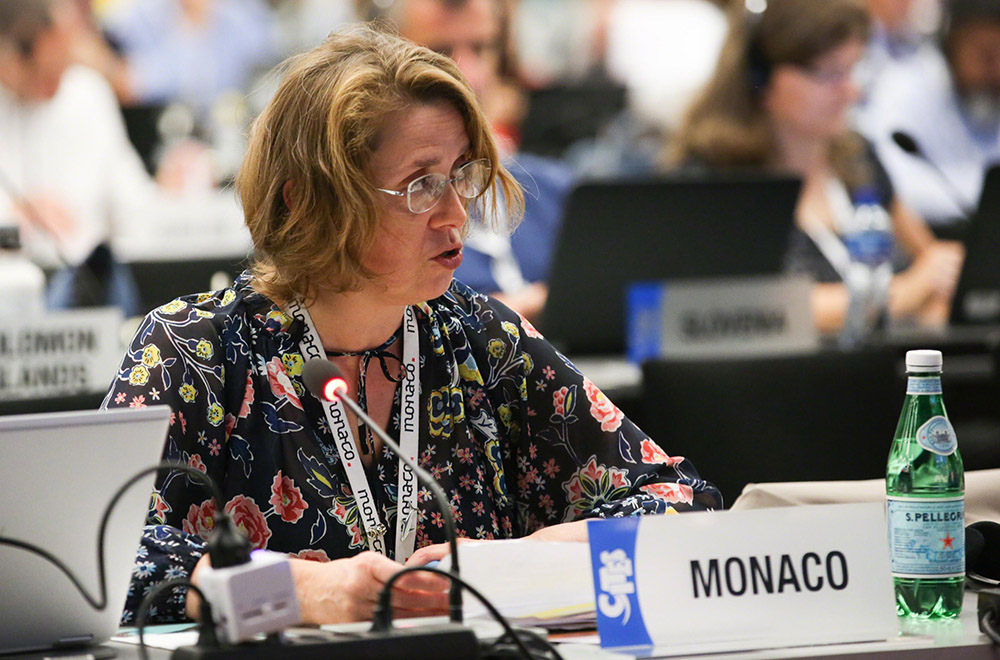
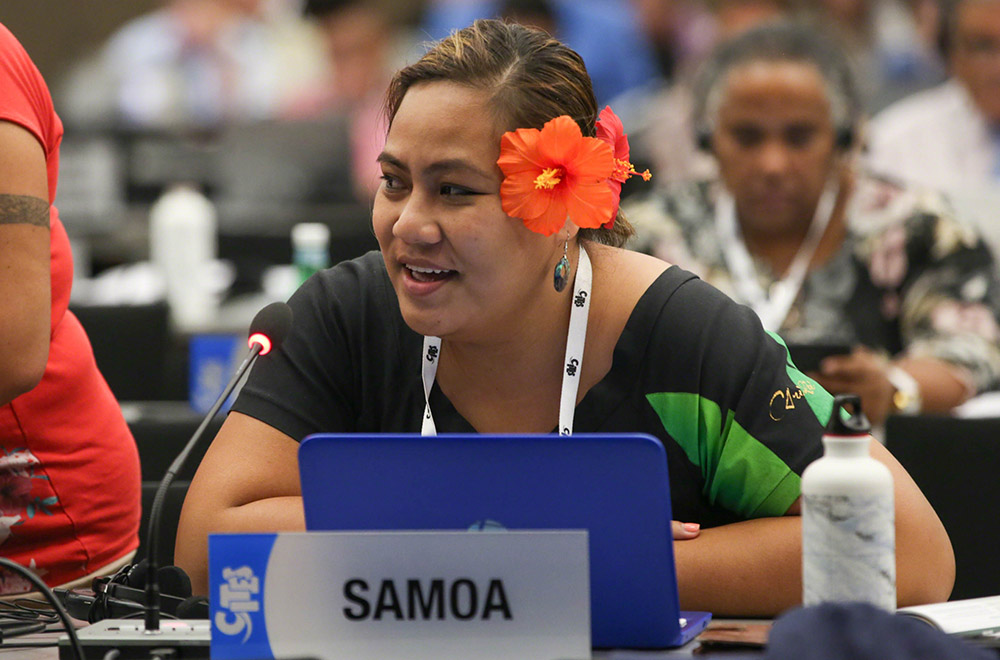
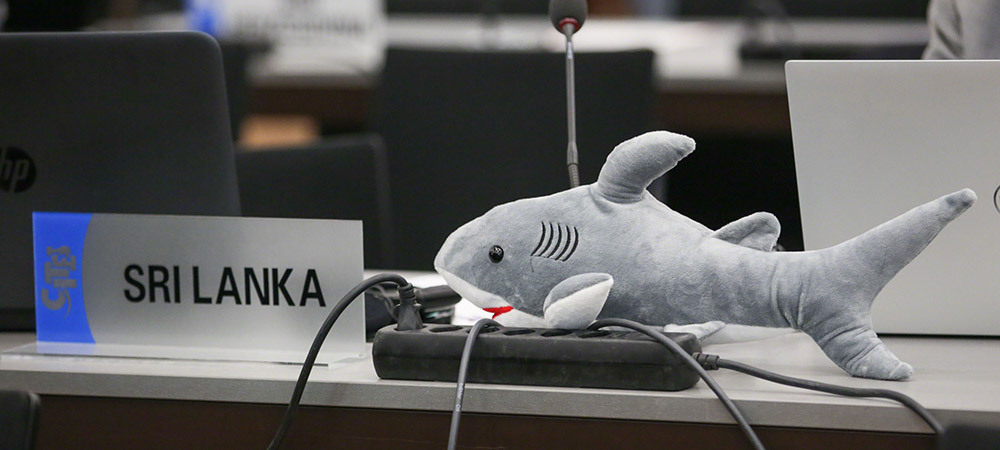
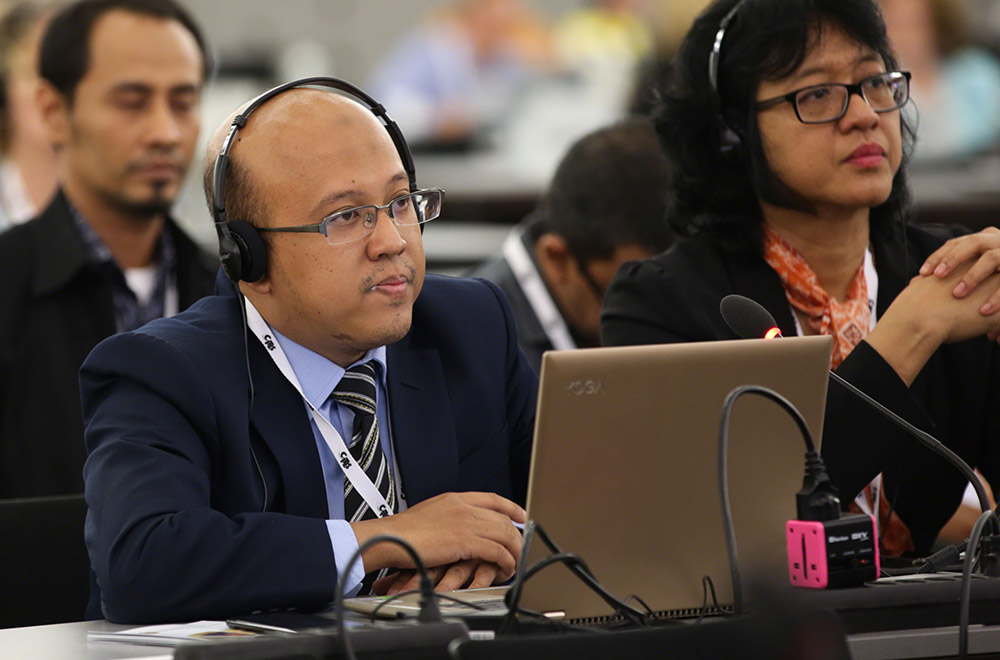
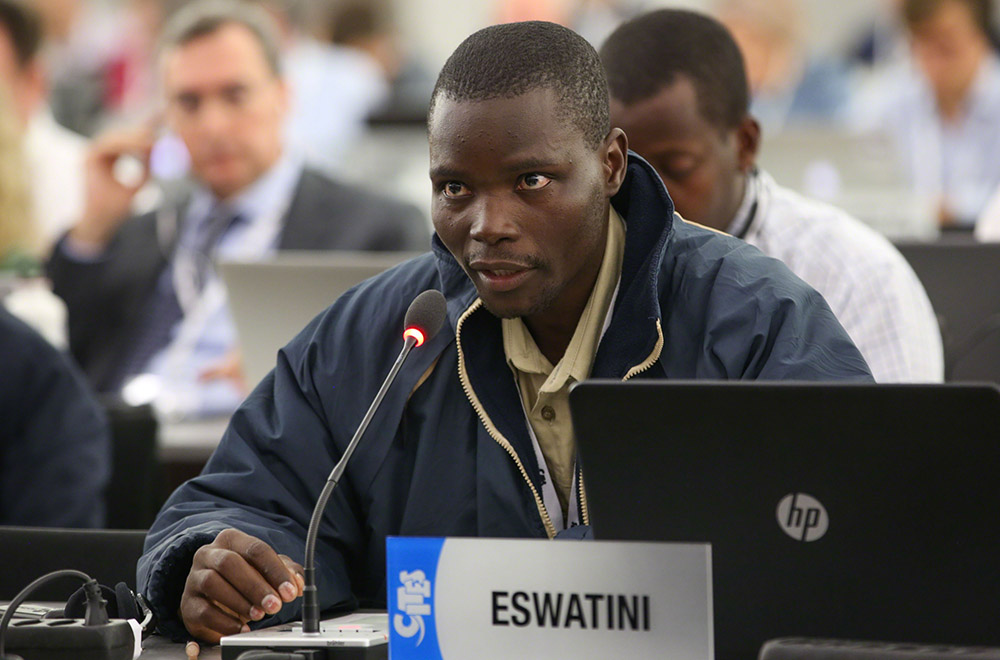
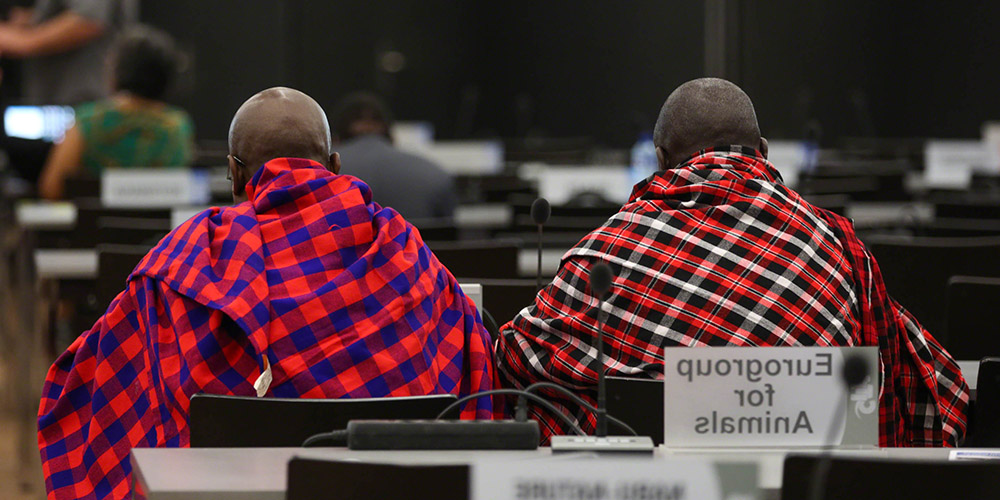
Highlights for Sunday, 18 August 2019

Committee I Chair, Rod Hay, opened the meeting with a traditional New Zealand saying, “Behold the breath of life… to the sacred earth, greetings” and joined his colleagues in a traditional song. In stressing collaboration and supporting disparate worldviews, he reminded participants that “nature isn’t ruled by dogma” and that the human relationship with nature must inform our decisions.
Committee I discussed the African Carnivores Initiative (ACI) between CITES and the Convention on the Conservation of Migratory Species (CMS) on four African carnivore species: lion, leopard, cheetah, and wild dog. CMS spoke in support of this joint work and highlighted the upcoming Conference of Parties in India, as well as plans for a new position to support ACI. The US noted the need for greater involvement by the Standing Committee. Zimbabwe, Mali, Togo, and others supported the creation of ACI and emphasized the importance of funding for implementation and capacity building. The Committee called on the CoP to adopt the draft decisions on the Joint CITES-CMS African Carnivores Initiative.
During the discussion on African lions and how they are affected by illegal trade, Mexico and other countries highlighted that big cats in other regions are also affected by illegal trade and the trade in bones and body parts, mentioning the case of jaguars in Bolivia, Belize, Peru, and Mexico. The Committee established a working group to discuss issues related to African lions as well as big cats in other regions, chaired by Mathias Lörtscher, Switzerland.
Committee I also discussed the agenda item on quotas on leopard hunting trophies. The EU favored suspending the quotas of countries that have not provided relevant information for review, pending recommendations to be made by the Animals and Standing Committees. Several African countries highlighted the difficulty of assessing leopard populations. Senegal stated that leopard hunting quotas have been out of date and that quotas should be based on scientific evidence. The Committee established a working group, chaired by the UK, to review the process for interpreting and applying quotas.
Committee I also agreed to review existing guidance on non-detriment findings (NDF), identify gaps and, subject to findings, to hold an international expert workshop to NDF guidelines. A proposal by Pakistan to discuss quotas for markhor hunting trophies was withdrawn. The Committee agreed to study the identification of sturgeons and paddlefish specimens in trade.
In Committee II, Chair Craig Hoover facilitated the discussion of agenda items on financial and administrative matters related to the implementation of the Convention and functioning of the Secretariat, including the relationship between CITES and other biodiversity-related Conventions. A proposal by Iraq on the language strategy for the Convention drew attention to the challenges faced by Arabic, Russian and Chinese-speaking delegates. Committee II also addressed the need for a more targeted review of the Convention’s effectiveness.
CoP18 held its first vote in the afternoon, with parties in Committee I supporting amendments that would restrict the definition of “appropriate and acceptable destinations” with regard to trade in live African elephants only to areas that are in situ conservation programmes, or secure areas within the natural range of the species.
+ Visit the web coverage for Sunday, 18 August 2018
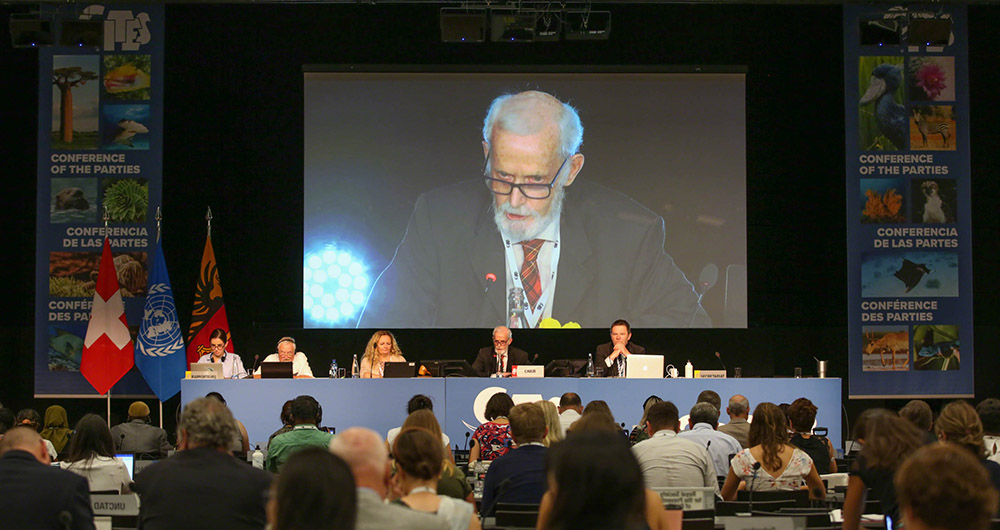
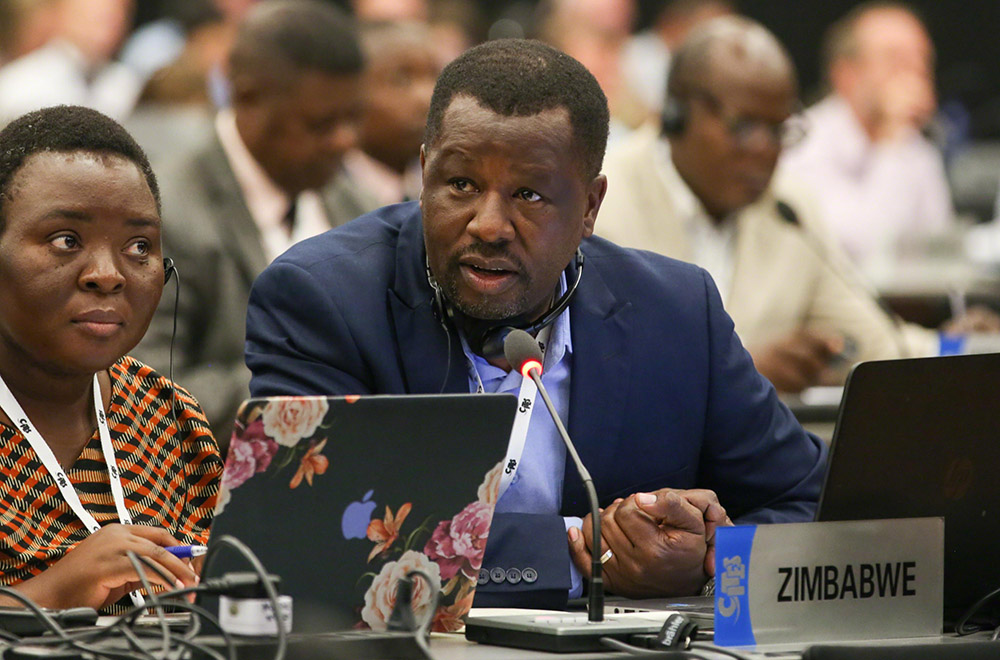
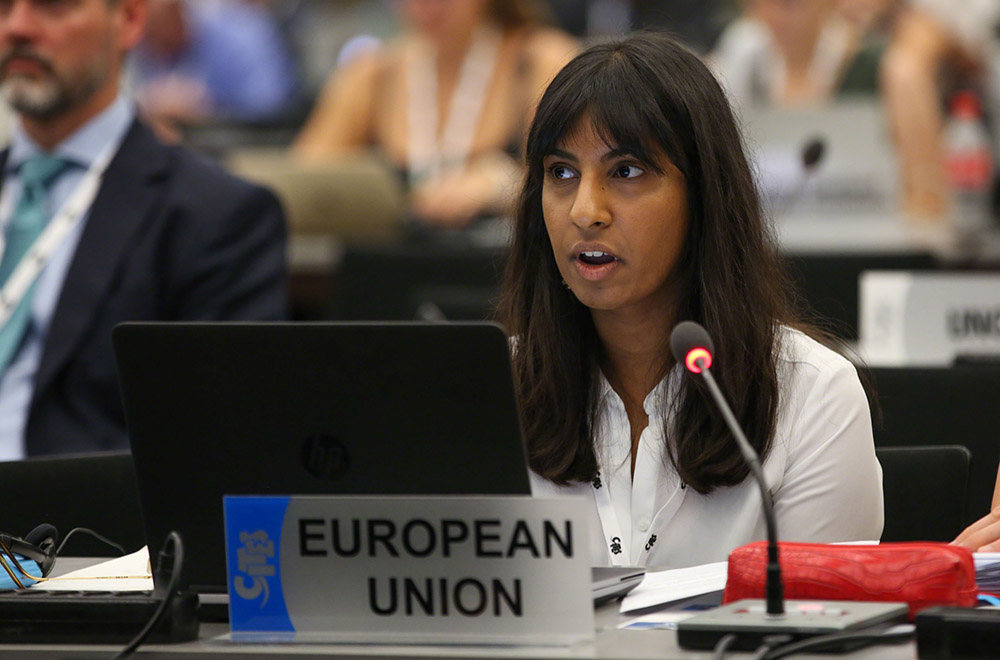

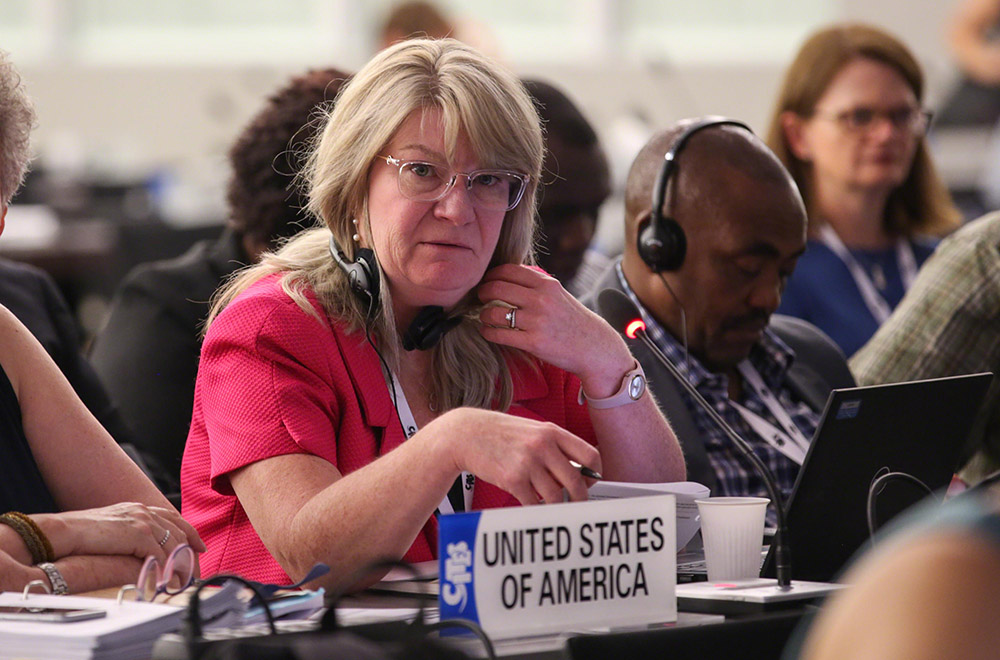
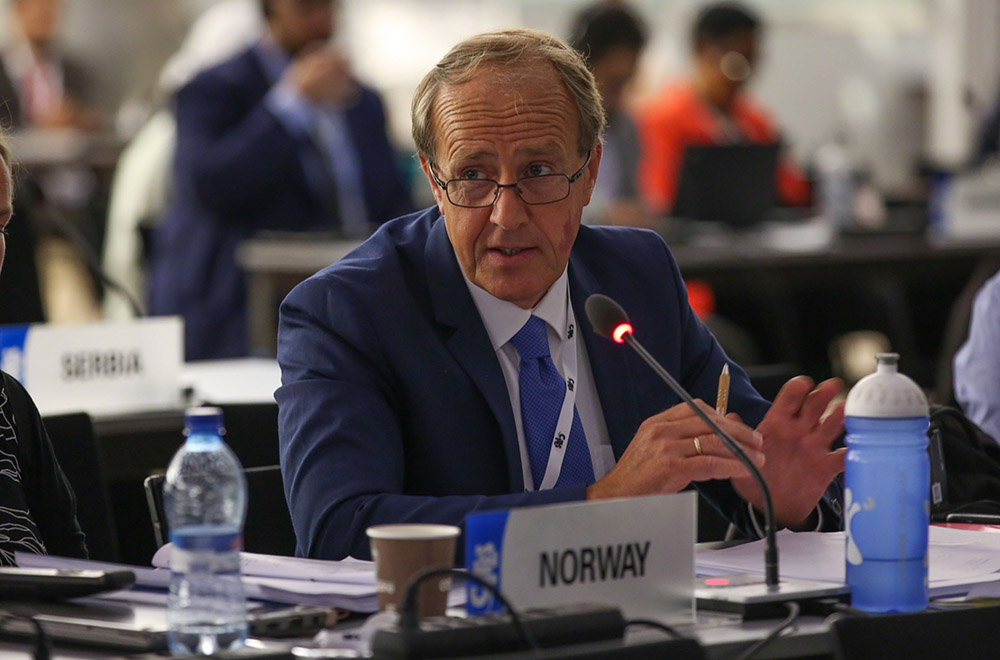
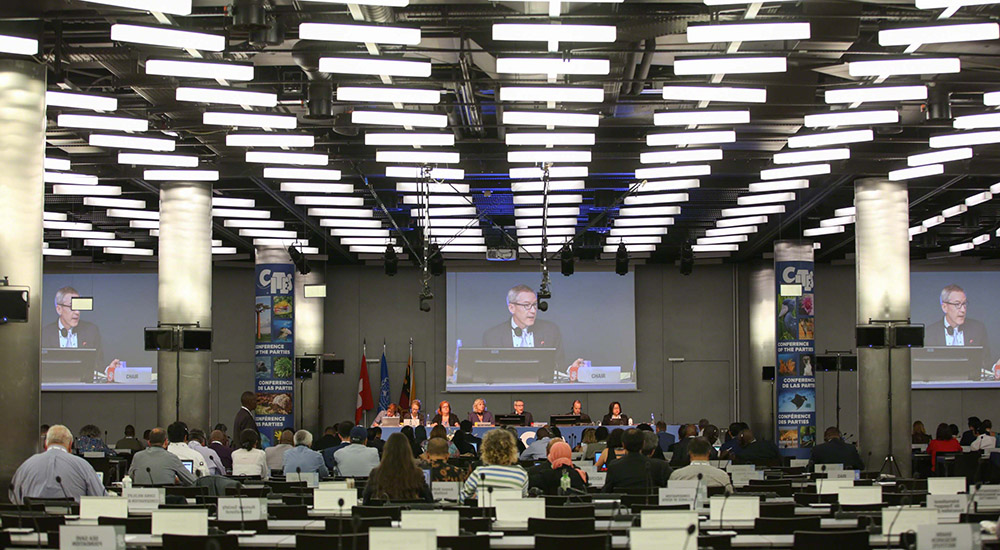
Highlights for Saturday, 17 August 2019
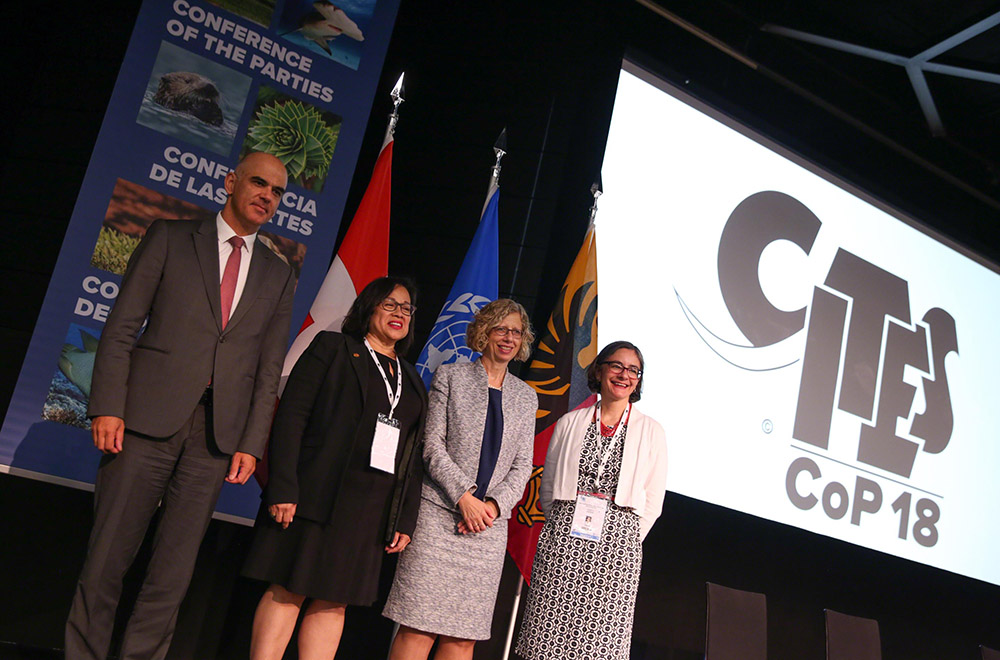
The 18th meeting of the Conference of the Parties to the Convention on International Trade in Endangered Species of Wild Fauna and Flora (CITES CoP18) opened on Saturday, 17 August 2019. Speakers at the opening expressed condolences for the terrorist attacks in Sri Lanka, which had resulted in the CITES CoP18 being moved to Switzerland, and Ivonne Higuero, CITES Secretary-General, led participants in observing a one-minute silence in honor of the victims of the attacks.
Alain Berset, Swiss Federal Council and Federal Department of Home Affairs, expressed Switzerland’s ongoing commitment as the host country of the CITES Secretariat, as well as to the Sustainable Development Goals (SDGs) and the 2030 Agenda. He highlighted Switzerland’s proposal, made three days earlier, for stricter domestic measures to address illegal trade in flora and fauna.
Inger Andersen, Executive Director, UN Environment Programme (UNEP), called for “effective multilateralism” to resolve wildlife challenges, emphasizing the importance of the 10-year strategic vision on the table at CoP18, the value of CITES as a science-based decision-making body, and the need for collective action across processes beyond CITES to address the drivers of biodiversity loss from factors such as over-harvesting of natural resources and poorly planned infrastructure. She urged all concerned to “stay at the table” of multilateralism and drew attention to global events in 2020 on oceans, biodiversity, and implementation of the Paris Agreement on climate.
Standing Committee (SC) Chair Carolina Caceres, Canada, emphasized the crucial role of CITES, as a pragmatic, results-driven Convention, in addressing key drivers of global biodiversity loss. She noted the increasing scope of CITES reflects the growing complexity of wildlife trade and global biodiversity conservation efforts.
Sri Lanka expressed his regret for being unable to welcome the CoP in Colombo, reaffirming the commitment to the Convention. CITES Secretary-General Higuero emphasized: the need for focus to ensure effectiveness and to update and expand CITES’ compliance instruments, including the permit system, given new challenges presented by the digital era; the importance of cooperation with other multilateral environment agreements and intergovernmental organizations; the need to bring equal attention to lesser known species; and the crucial role of wildlife custodians and rural communities.
The CoP then addressed administrative and strategic matters, including the election of committee chairs. The CoP elected Thomas Jemmi, Switzerland as Chair; Awilo Ochieng Pernet, Switzerland as Alternate Chair; Maurice Isaacs, Bahamas, and James Lutalo, Uganda, as Vice Chairs; Miet Van Looy, Belgium, as Chair of Credential Committee; Rod Hay, New Zealand, as Chair of Committee I; and Craig Hoover, US, as Chair of Committee II.
Secretary-General Higuero introduced the working programme and noted two planned evening sessions, as well as merging items on ID manuals into Committee II. She also announced the SC’s suggestion of moving item 75 on pangolins, to Committee II. The US suggested that item 86 on saiga antelope regarding implementation issues be discussed after the proposal for uplisting of the species and further that item 81 on grey parrots, and item 89 on totoaba, should be moved to Committee II. CoP18 adopted the working programme as amended.
In the afternoon, parties met in regional groups.
+ Visit the web coverage for Saturday, 17 August 2019
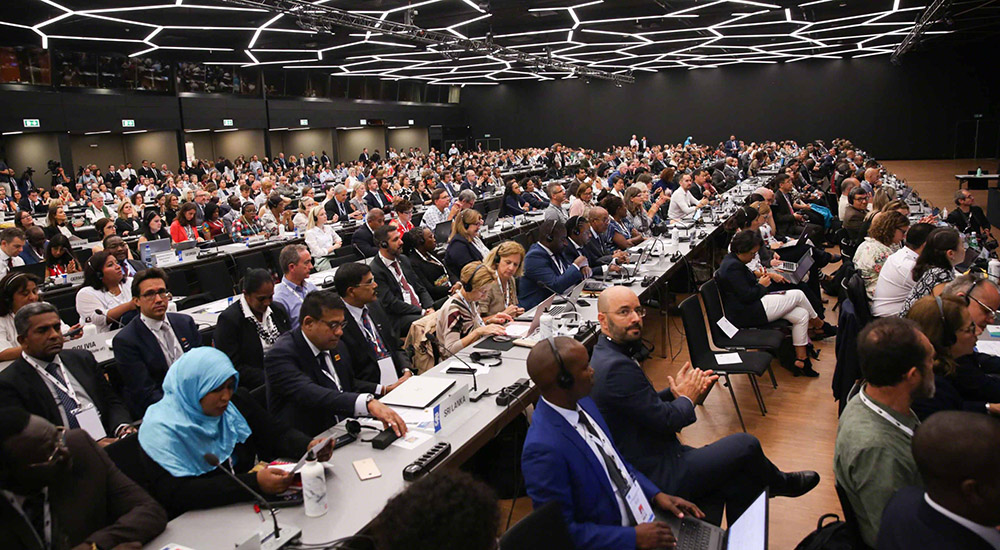
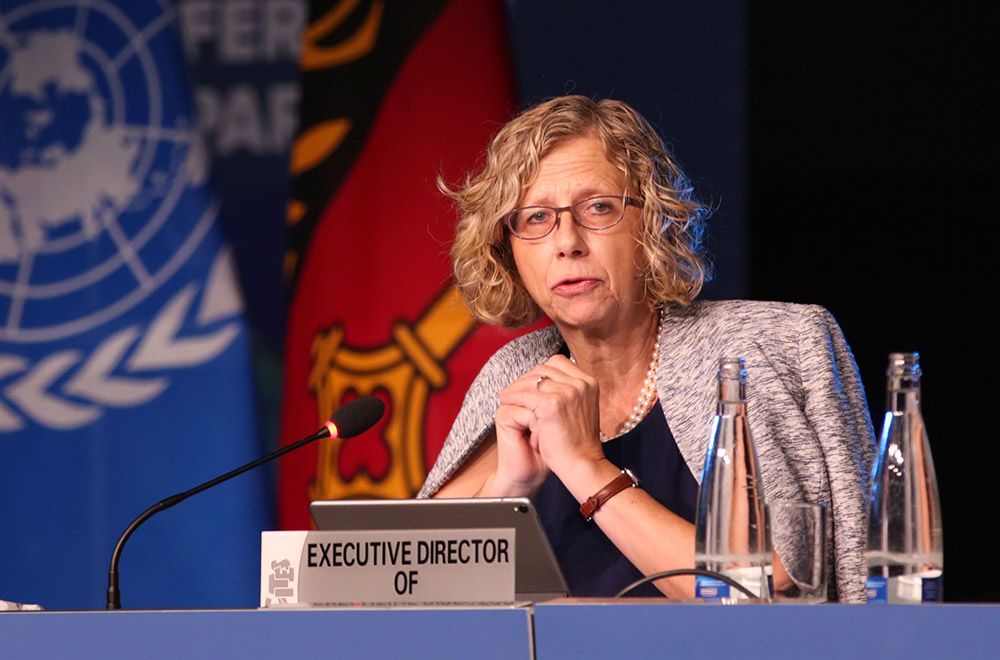

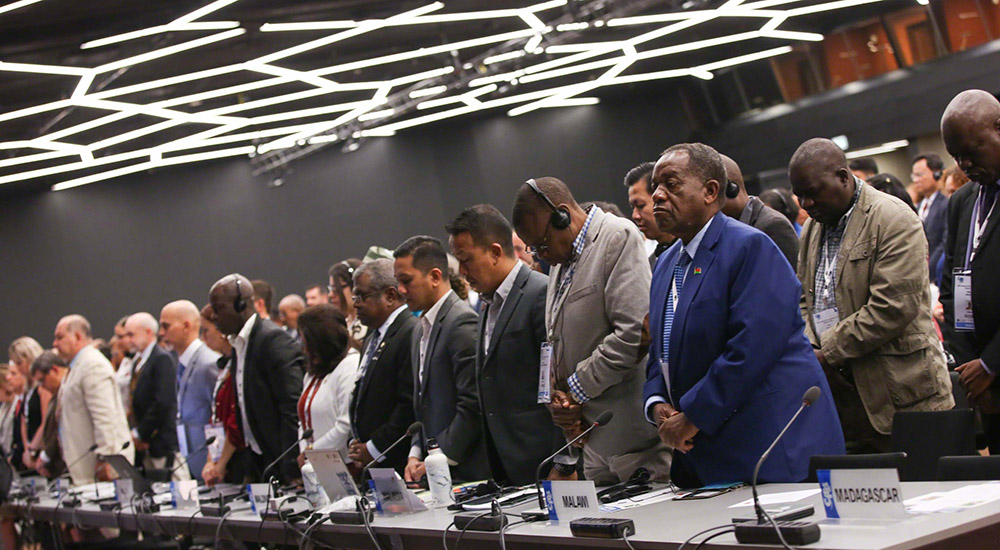
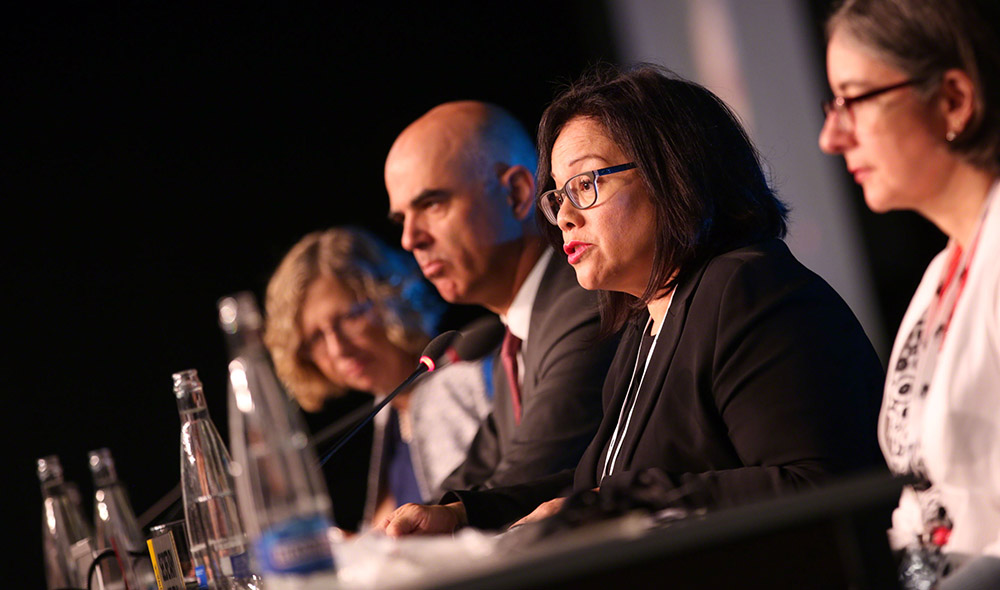
DOWNLOAD ENB REPORT
CITES Resources
- CoP18 Agenda and Working Documents
- CoP18 Working Programme
- Press Release: Proposals to Change Protection Levels of Species Under International Trade at the Next World Wildlife Conference
IISD ENB/ENB+ Meeting Coverage
- 70th Meeting of the CITES Standing Committee, 1-5 October 2018, Sochi, Russia
- 69th Meeting of the CITES Standing Committee, 27 November - 1 December 2017, Geneva, Switzerland
- 29th Meeting of the CITES Animals Committee, Joint Meeting of the CITES Animals and CITES Plants Committees, and 23rd Meeting of the CITES Plants Committee, 18-27 July 2017, Geneva, Switzerland
- CoP17, 24 September - 5 October 2016, Johannesburg, South Africa
- IISD Reporting Services Archive of CITES Meetings
IISD Resources
- BIODIVERSITY-L - A Mailing List for News on Biodiversity and Wildlife Policy
- SDG - A Mailing List for News on Sustainable Development Policy
- SDG Update Newsletter - A compilation of news, commentary and upcoming events published on the SDG Knowledge Hub
- SDG Knowledge Hub - An Online Resource Center for News and Commentary Regarding the Implementation of the United Nations’ 2030 Agenda for Sustainable Development, including all 17 Sustainable Development Goals (SDGs)
- Linkages Update - International Environment and Sustainable Development News
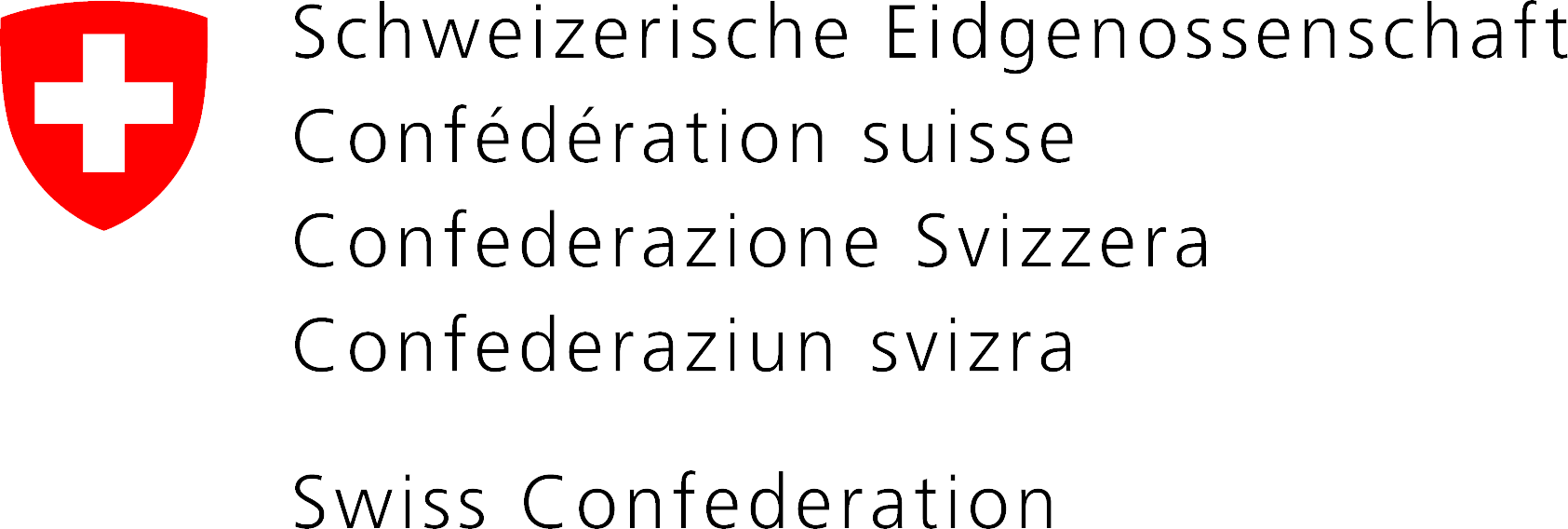
 Specific funding for IISD Reporting Services coverage of CoP18 has been provided by the Swiss Federal Food Safety and Veterinary Office and the European Union
Specific funding for IISD Reporting Services coverage of CoP18 has been provided by the Swiss Federal Food Safety and Veterinary Office and the European Union